
The all-new, all-electric 2024 Dodge Charger Daytona made its official public debut today at the media preview for Roadkill Nights Presented by Dodge at M1 Concourse in Pontiac, Michigan. I was among the invited journalists who saw the new Charger Daytona up close. After seeing multiple prototypes testing on the streets of Detroit, the production model is very faithful to the concept I saw in 2022.
To say this car is controversial is an understatement. Many die-hard Mopar fans have been vocal about their displeasure with Dodge moving away from its conventional HEMI® V8s and into the realm of electric vehicles (EVs). Rest assured, the American performance brand hasn’t given up on internal combustion engines (ICEs); however, you’ll need to wait a few months to get your hands on one of those.
But I want to move past the debate over powertrains and talk about the new two-door Charger (LB) in general and my overall first impression of Dodge’s latest muscle car.
Exterior Styling –
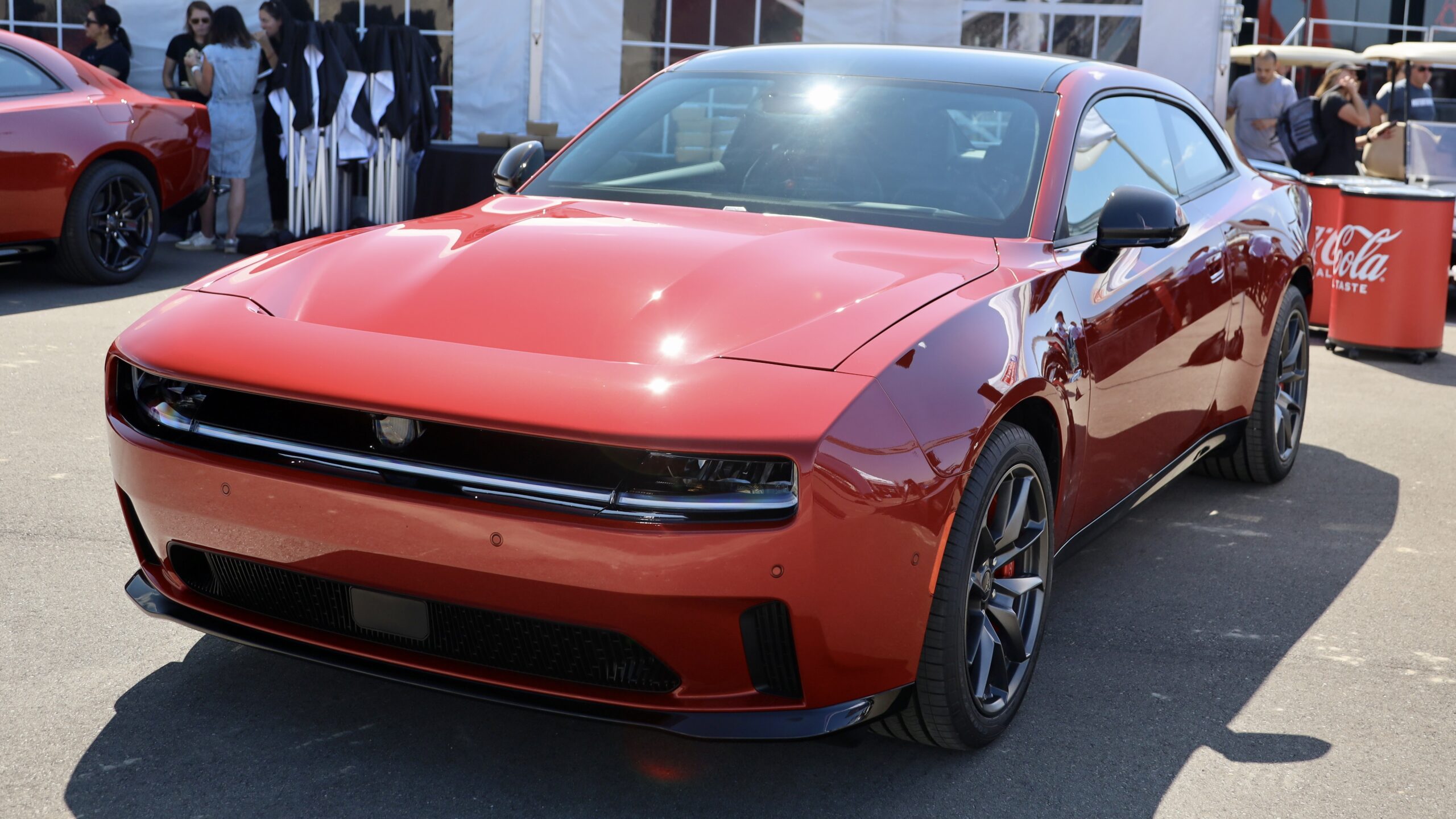
The all-new 2024 Dodge Charger Daytona embodies a bold design that stays true to the Dodge brand while introducing a fresh, contemporary look. Although it may not evoke the same retro feel as the outgoing Challenger, the new Charger successfully blends classic design elements with modern aesthetics, creating a vehicle that stands out on the road.
At first glance, the Charger Daytona’s front grille is a striking homage to the second-generation (1968-1970) Charger B-Body. The design closely mirrors the concept car, with a strong, assertive presence that commands attention. While the concept boasted sharp-looking LED Matrix headlamps, the production 400-volt R/T and Scat Pack models feature LED reflective headlamps. These headlamps enhance the car’s aggressive and wide stance, a look I hope will carry over to the 800-volt SRT Banshee model. The luminescent white Fratzog logo and signature LED daytime running lights (DRLs) further define the Charger Daytona’s unique front end, distinguishing it from the outgoing model and anything else on the road.
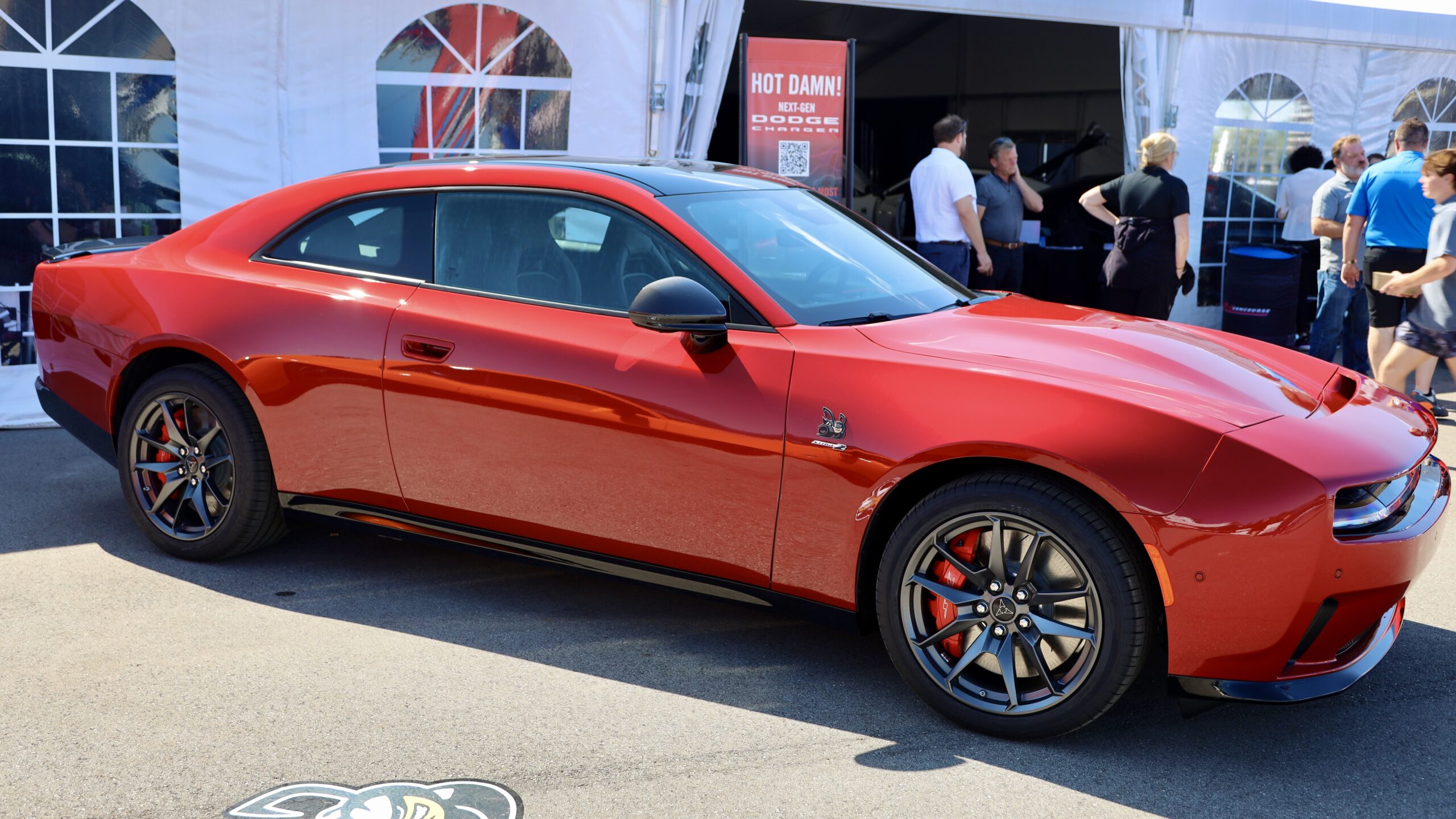
One of the most distinctive features of the Charger Daytona is its patent-pending R-wing design, which has successfully gone from concept to production. This innovative feature gives the hood a unique appearance, setting the Daytona apart from any other vehicle in its class. Looking ahead, the 2025 Charger SIX PACK model will introduce a power dome hood, making the electrified Daytona even more distinguishable from its internal combustion engine (ICE) counterpart.
The Charger Daytona’s side profile is both sharp and sleek, featuring classic Coke bottle curves that are instantly recognizable. While some enthusiasts have expressed disappointment over the absence of scallops in the front doors—an iconic feature on Chargers of the past—the clean lines and smooth surfaces contribute to a more modern, refined appearance. The introduction of new electronic door handles, shared with the Jeep® Wagoneer S, adds a touch of modernity and replaces the pull-out units seen on the concept car.
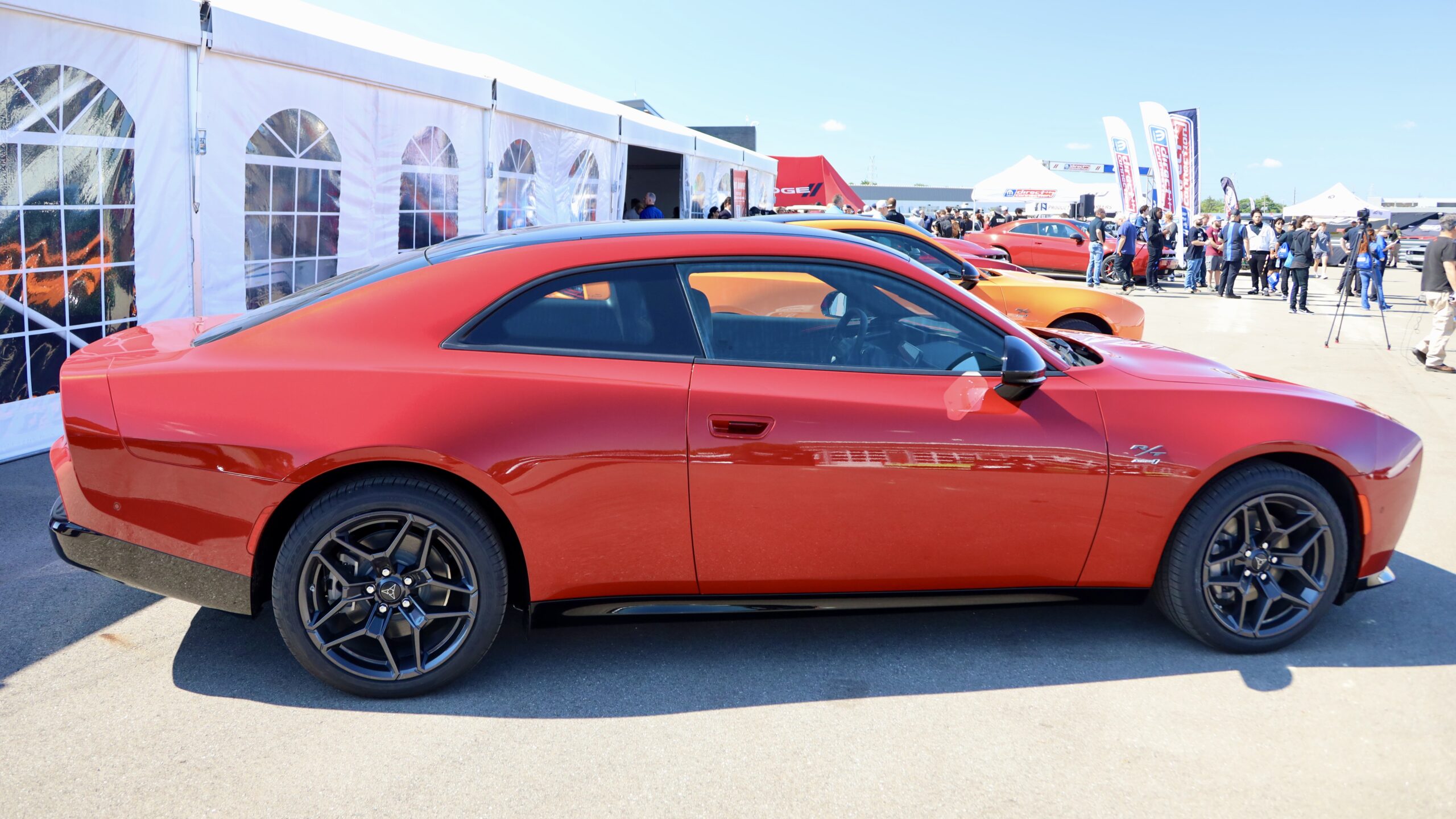
The transition from concept to production also saw the replacement of carbon-fiber elements with Gloss Black accents, including the lower rockers along the side profile. These Gloss Black elements lend the Charger Daytona a longer, more streamlined appearance, far more visually appealing than the gray plastic lowers of the outgoing Challenger. Additional features like side marker lights positioned in front of the front wheels and behind the rear wheels enhance the car’s visibility and overall aesthetic. Although the sleek carbon-fiber mirrors from the concept have been swapped out for larger production units, these new mirrors are more practical, providing improved rearward visibility. For those who still crave the carbon-fiber touch, carbon-fiber mirrors are an option.
Despite the Charger Daytona’s modern upgrades, the rear design subtly nods to its predecessors, particularly the 2011 to 2014 Charger models. The squared-off rear end, complete with next-generation race track LED taillights, closely resembles those of earlier Charger sedans. Even the rear window maintains a similar side protrusion, echoing the iconic “buttress” rear window design. From this angle, the car’s width is most evident, with bulging fenders that comfortably accommodate 325/35R20 rear tires—eliminating the need for an aftermarket widebody kit.
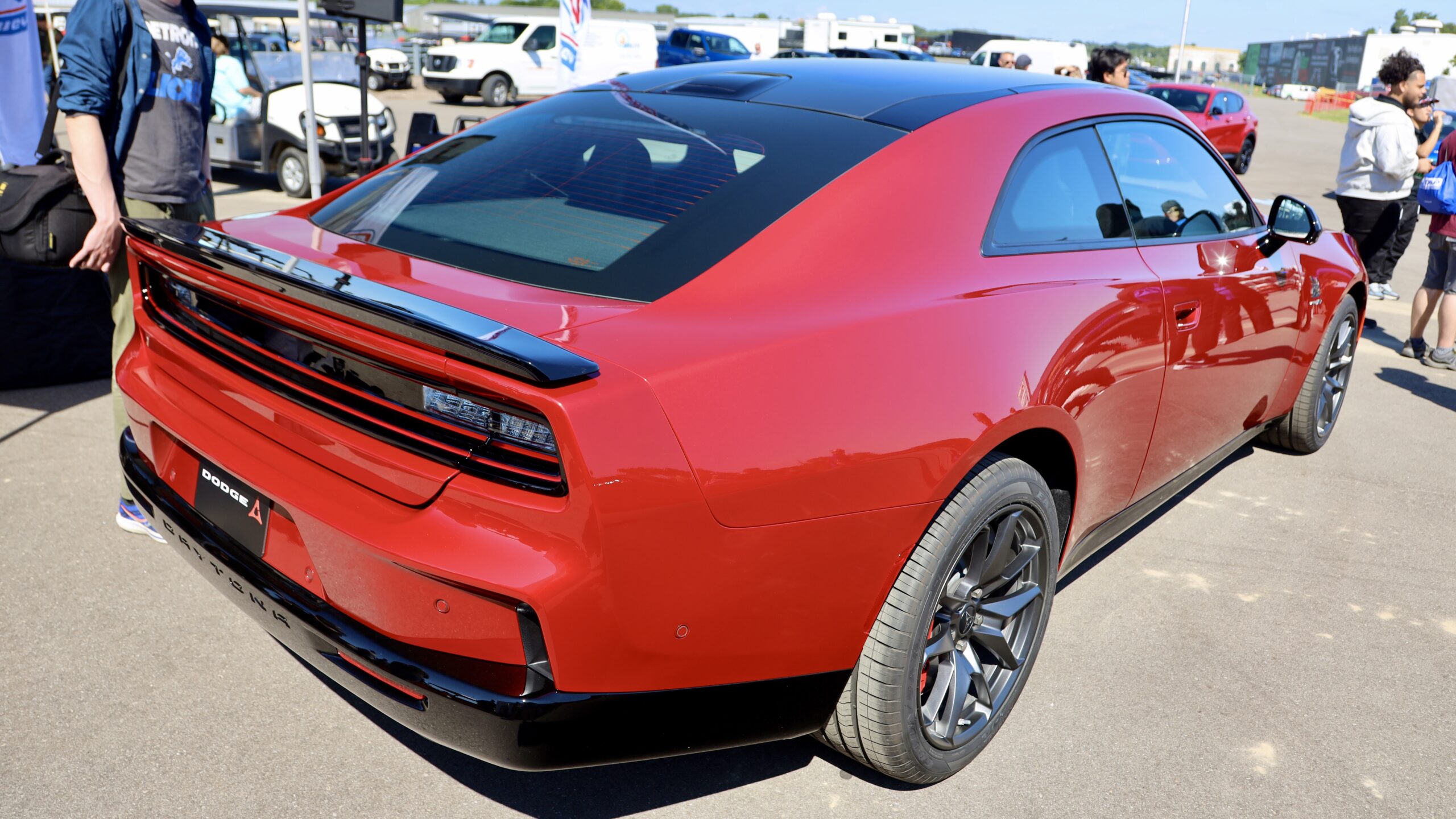
One of the most practical features of the new Charger Daytona is its rear hatch design. Upon close inspection, it’s clear that this hatchback-style opening offers much easier access to the cargo area compared to the outgoing model’s trunk. This design change makes loading larger items into the vehicle far more convenient. Despite the functional benefits, the design team cleverly maintained the traditional coupe appearance when the rear hatch was closed, ensuring the Charger Daytona didn’t lose its classic silhouette.
The Charger Daytona’s rear fascia houses the patented Fratzonic Chambered Exhaust, a feature that marks a significant departure from the concept’s design. While the concept integrated the exhaust into a rear valance, the production version opts for a more flush design. The metal accents that once adorned the concept have been replaced by molded Gloss Black plastic, creating a cohesive look with the rest of the rear fascia. The exhaust also incorporates the same grille pattern found on the lower front fascia, tying the overall design together.
Interior Styling –
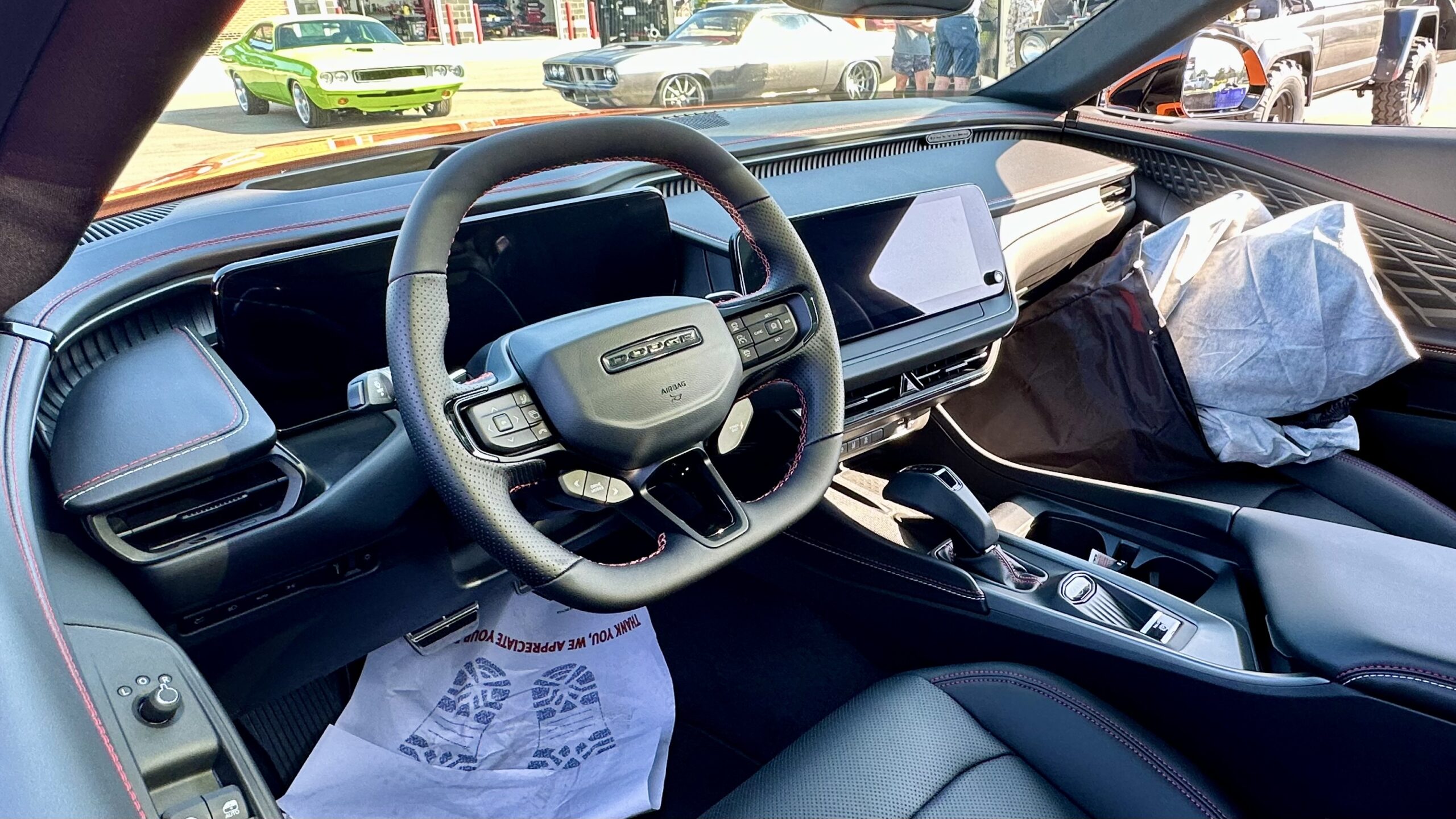
It’s clear that Dodge has taken a significant step forward in interior design and quality. Fans of the brand will be pleased to hear that the fit and finish of these vehicles are lightyears ahead of the outgoing models, showcasing a level of refinement and attention to detail that was sometimes lacking in previous generations.
The interior of the Charger Daytona is dominated by an instrument panel (I/P) that stays true to the concept car, almost untouched. This design choice gives the interior a broad, spacious feel, largely thanks to the horizontal shapes stretching across the cabin. The centerpiece of the I/P is a massive 16-inch curved instrument cluster paired with a 12.3-inch Uconnect 5 center screen, offering a seamless blend of form and function.

A sweeping line runs across the top of the I/P, accented by red ambient lighting and metal trims, adding a touch of sophistication. While I’m not typically a fan of tablet-style displays, Dodge has done an admirable job integrating this feature—far better, in my opinion, than Ford’s approach in the new 2024 Mustang.
On the passenger side, the trim features metal text reading “Daytona.” Initially, I expected the trim to denote either “Stage 1” or “Stage 2,” based on the upgrades for the R/T or Scat Pack as suggested at SEMA in 2022. However, it appears that Dodge may stick with the “Daytona” badging exclusively, though no official confirmation was provided.
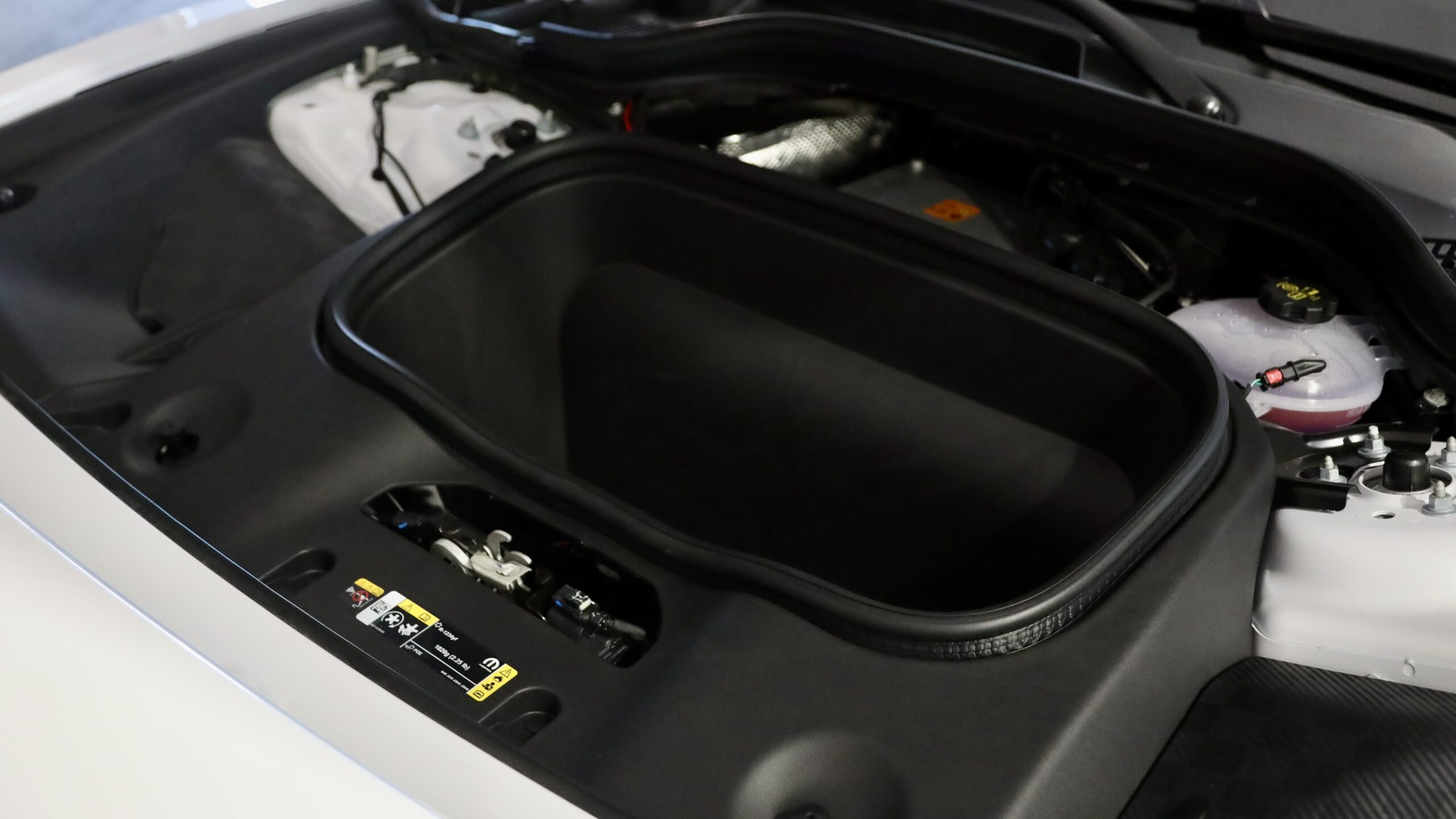
The I/P is wrapped in leather and accented with red and white stitching, exuding a premium feel. The use of soft-touch materials throughout the cabin is a welcome departure from the rubberized “elephant skin” dash that characterized the 2011 to 2023 Charger models.
The steering wheel of the Charger Daytona features an edgy and modern take on the Dodge logo, providing a fresh yet familiar touchpoint for drivers. The cabin layout retains a degree of traditional controls, such as a turn signal stalk in its usual location and a console shifter that isn’t a rotary dial or push button. Instead, Dodge has chosen a pistol-grip-style gear shifter that adds a sporty, tactile element to the driving experience. The center stack includes redundant physical buttons, eliminating the need to rely solely on the touchscreen for basic functions—a smart move that many drivers will appreciate.
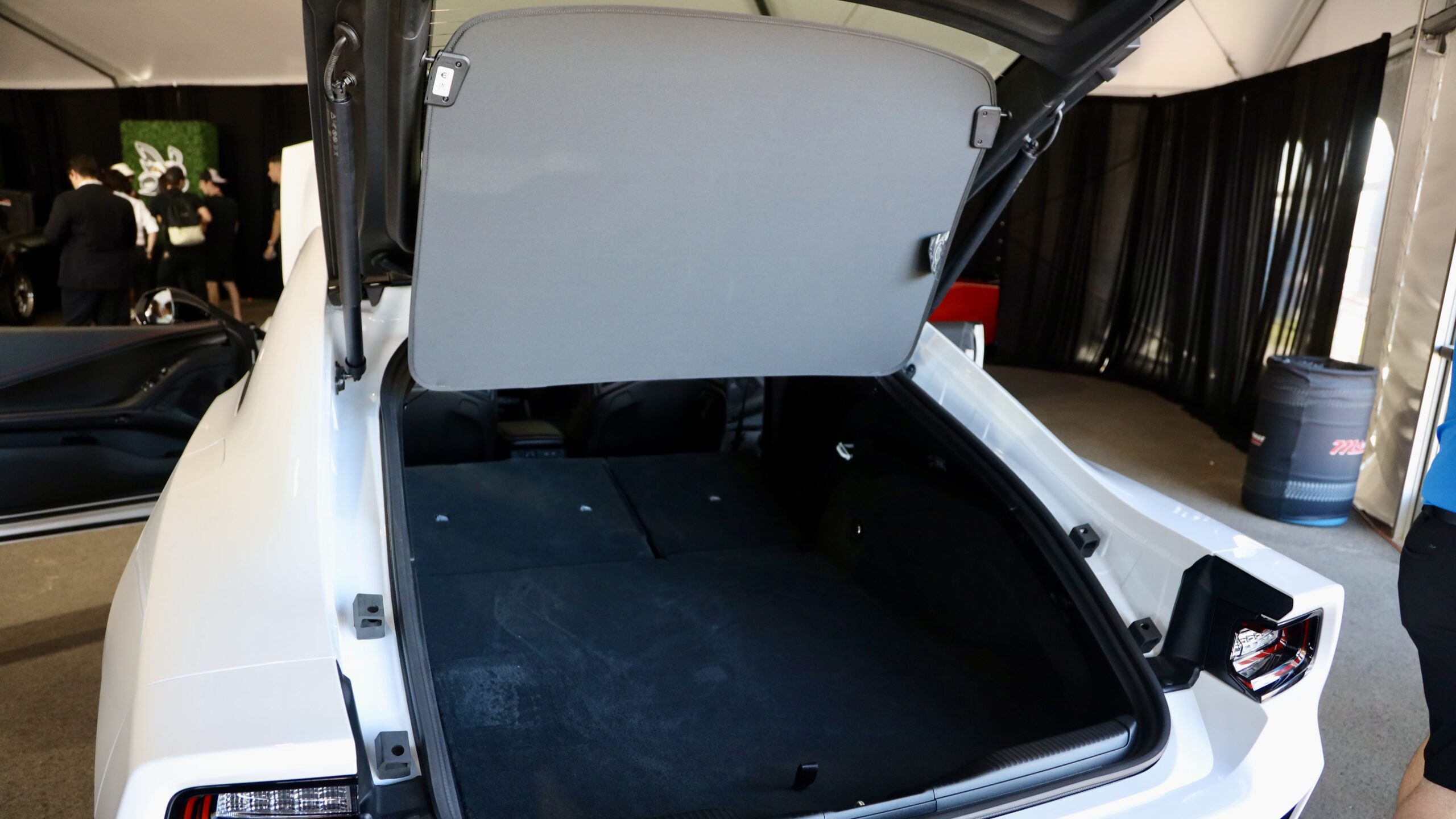
New sport bucket seats offer a supportive ride, although the integrated headrest may not be to everyone’s liking. The R/T model’s adjustable headrest should be great for long road trips, and some drivers may feel its absence. While providing a more open cabin feel, the glass roof design might have been more effective as a panoramic roof, similar to the one in the 2023 Chrysler 300C.
The optional Carbon and Suede Package adds a high-quality carbon fiber accent that extends across the front doors, looking far more premium than the faux carbon fiber found in many vehicles today. Dodge has also added sill plates with Dodge text and the Fratzog logo—a welcomed addition given how easily the paint on the last generation’s sill plates could be scuffed by shoes.

The rear hatch design is perhaps one of the most practical additions to the Charger Daytona, providing much easier access to the cargo area than the current car’s trunk opening. Despite the practicality, the design team has cleverly ensured that the car doesn’t appear to be a hatchback when the rear is closed, maintaining the traditional Charger silhouette.
The Charger Daytona’s wheelbase has grown by an inch compared to the outgoing four-door model, translating to significantly improved legroom for rear-seat passengers—an area where the previous Challenger fell short. The hatchback design allows the rear seats to fold completely flat, creating impressive cargo space.
Overview –
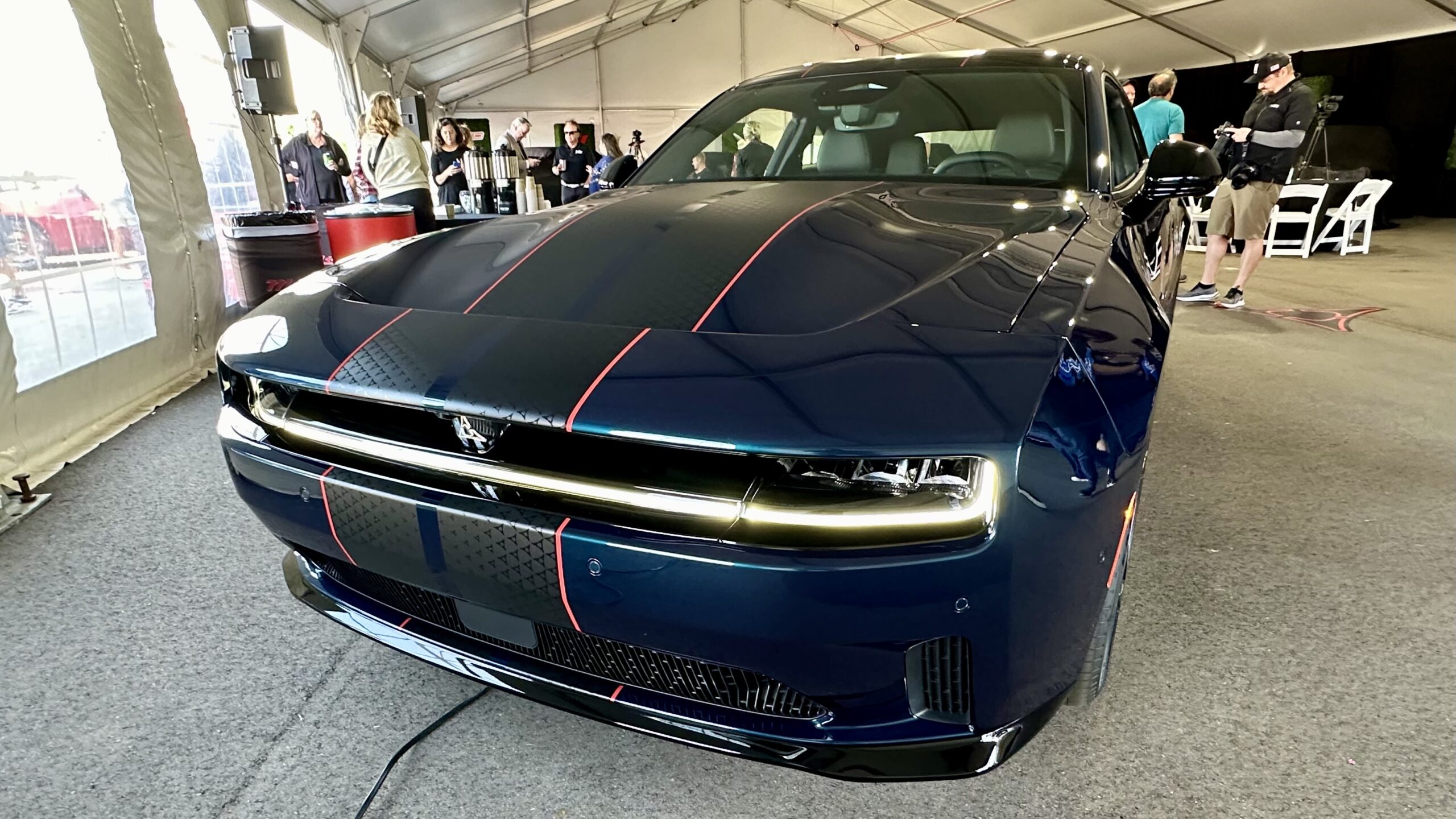
Overall, the 2024 Dodge Charger Daytona represents a massive leap forward from the outgoing model. While the shift to electric power may dishearten some die-hard HEMI V8 fans, both the ICE and sedan models are set to begin production in January. If these First Edition models indicate what’s to come, I’m confident that enthusiasts will embrace the new Charger, whether they opt for electric or gasoline power.
I can’t wait to get behind the wheel of both versions. Stay tuned for more insights as we edge closer to the official launch.

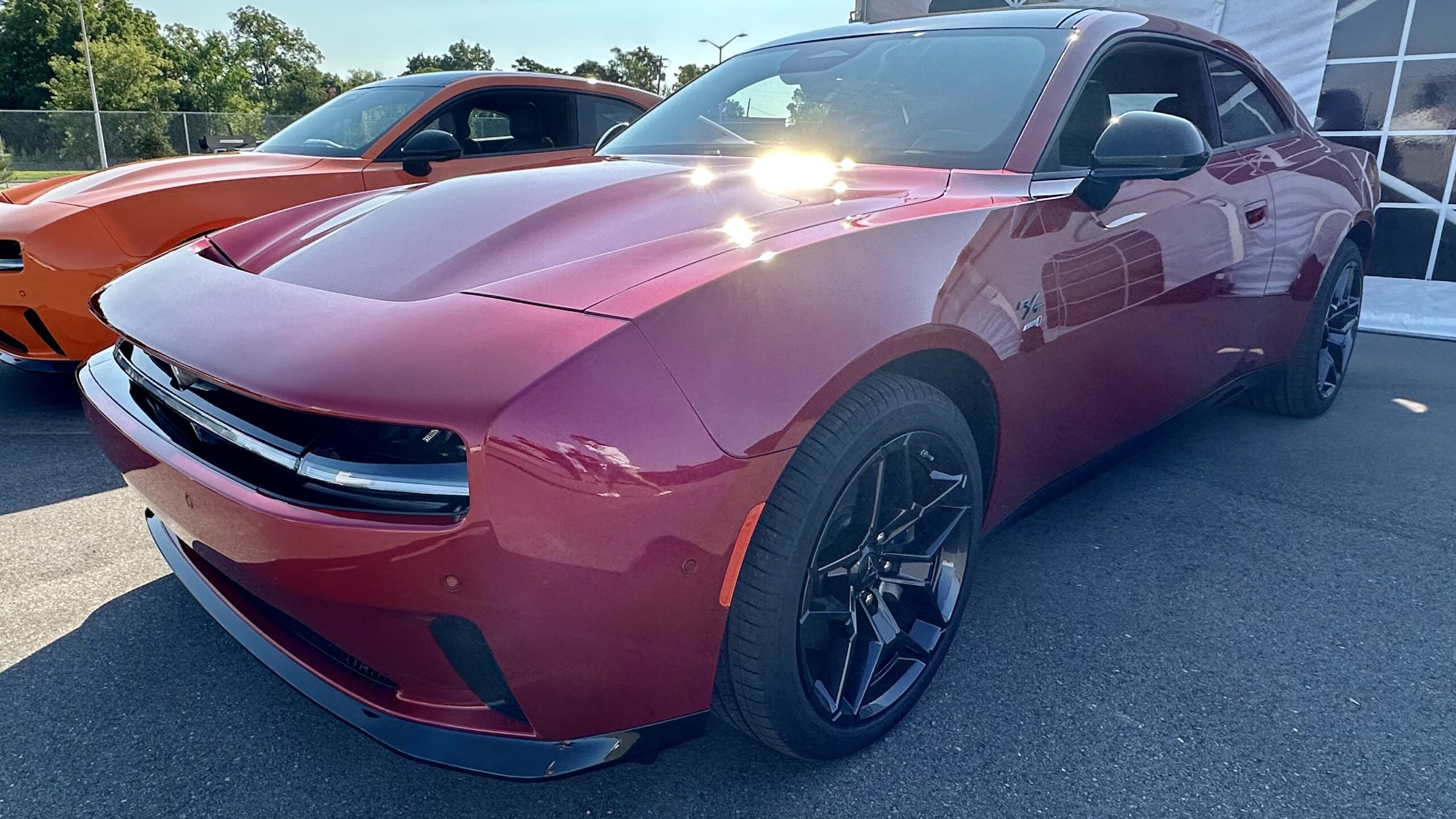

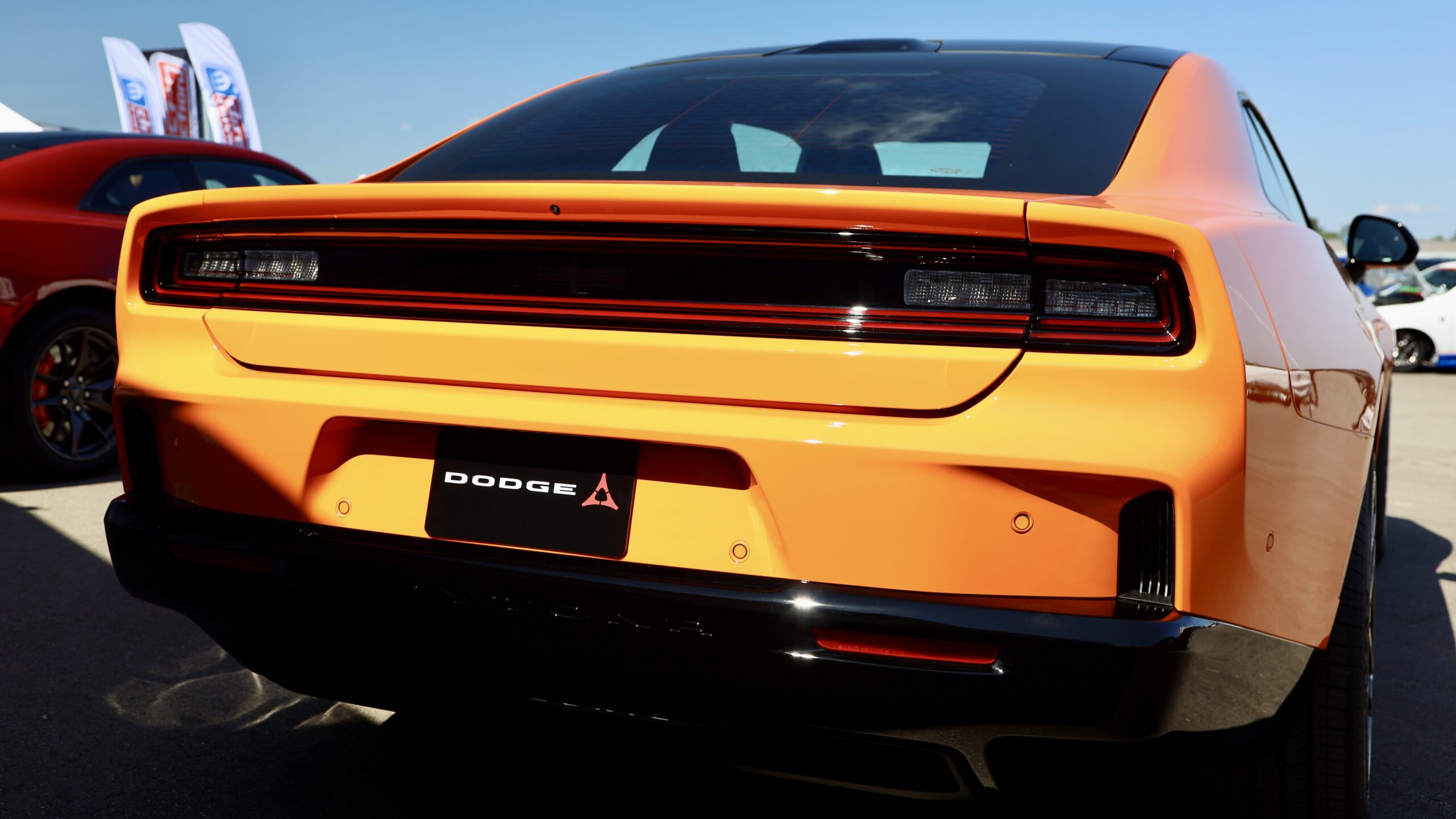
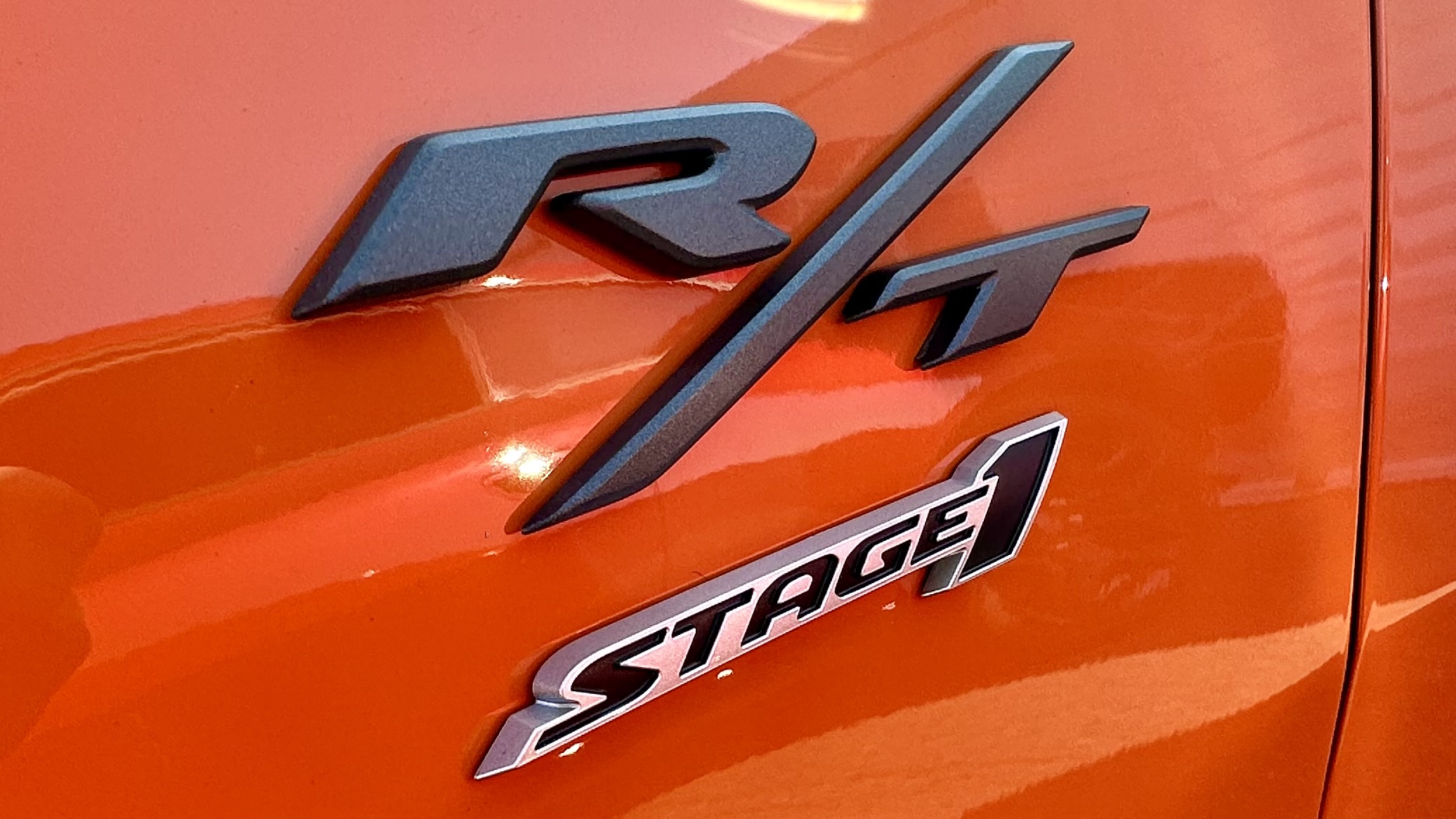

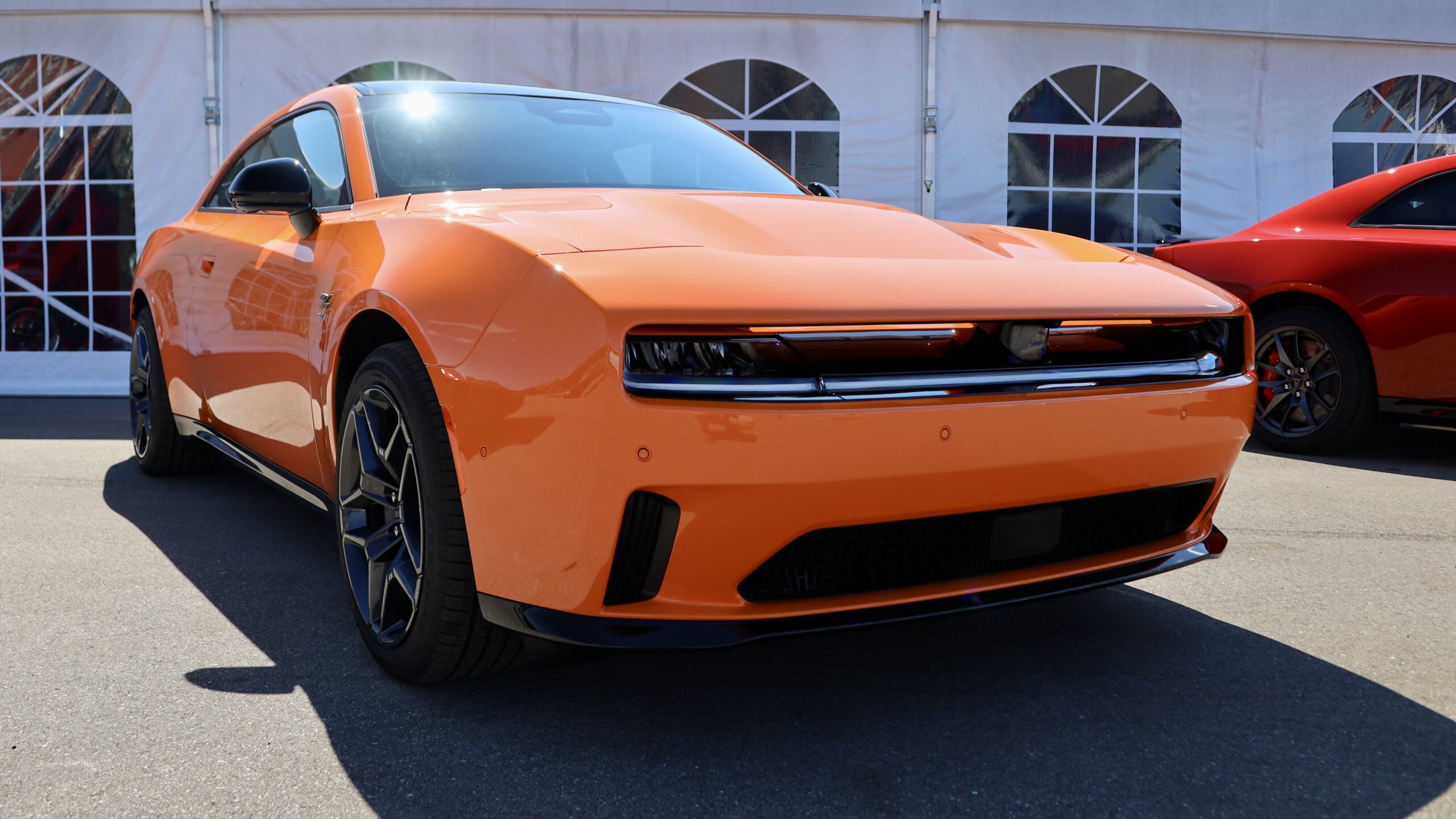
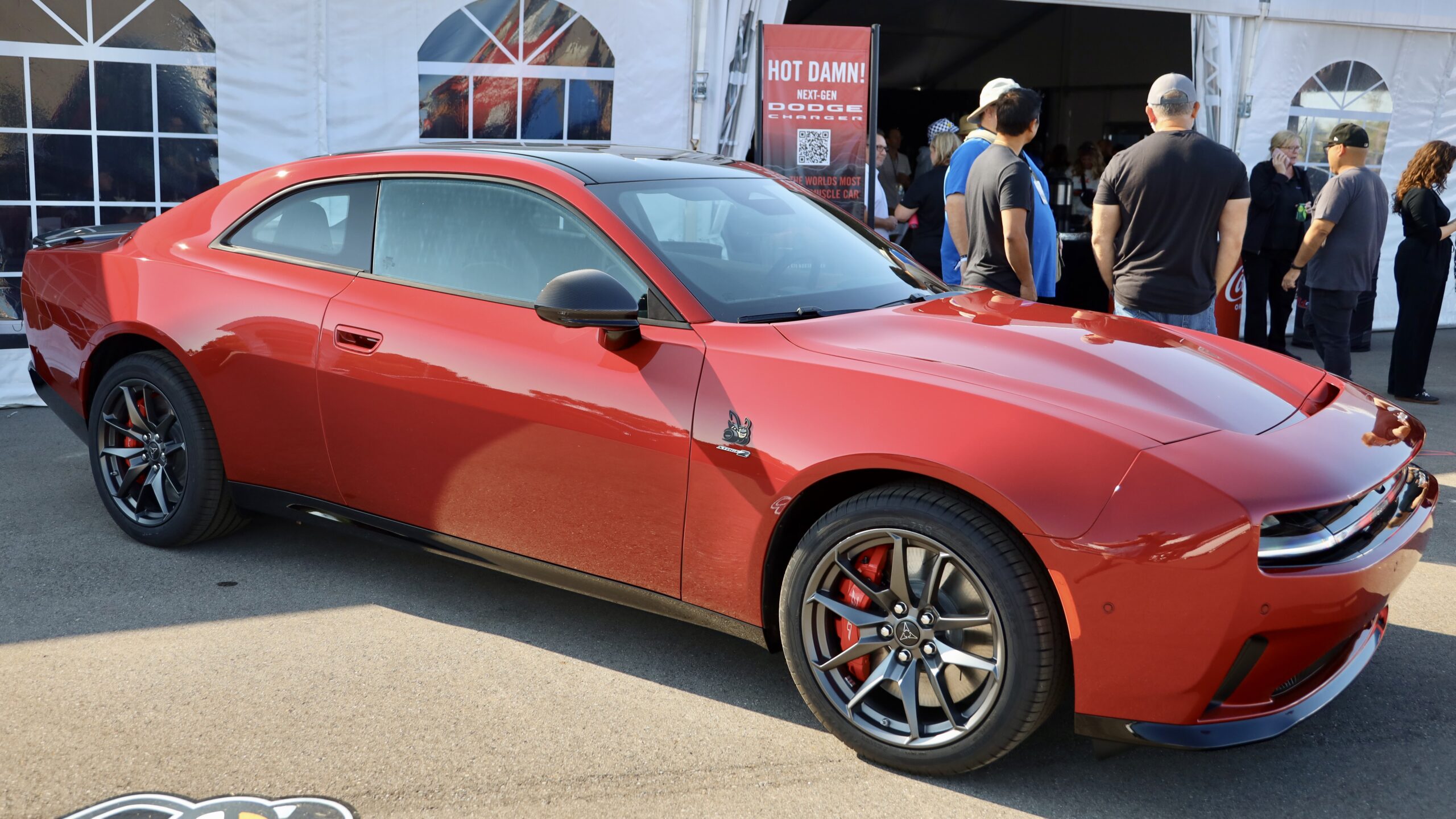
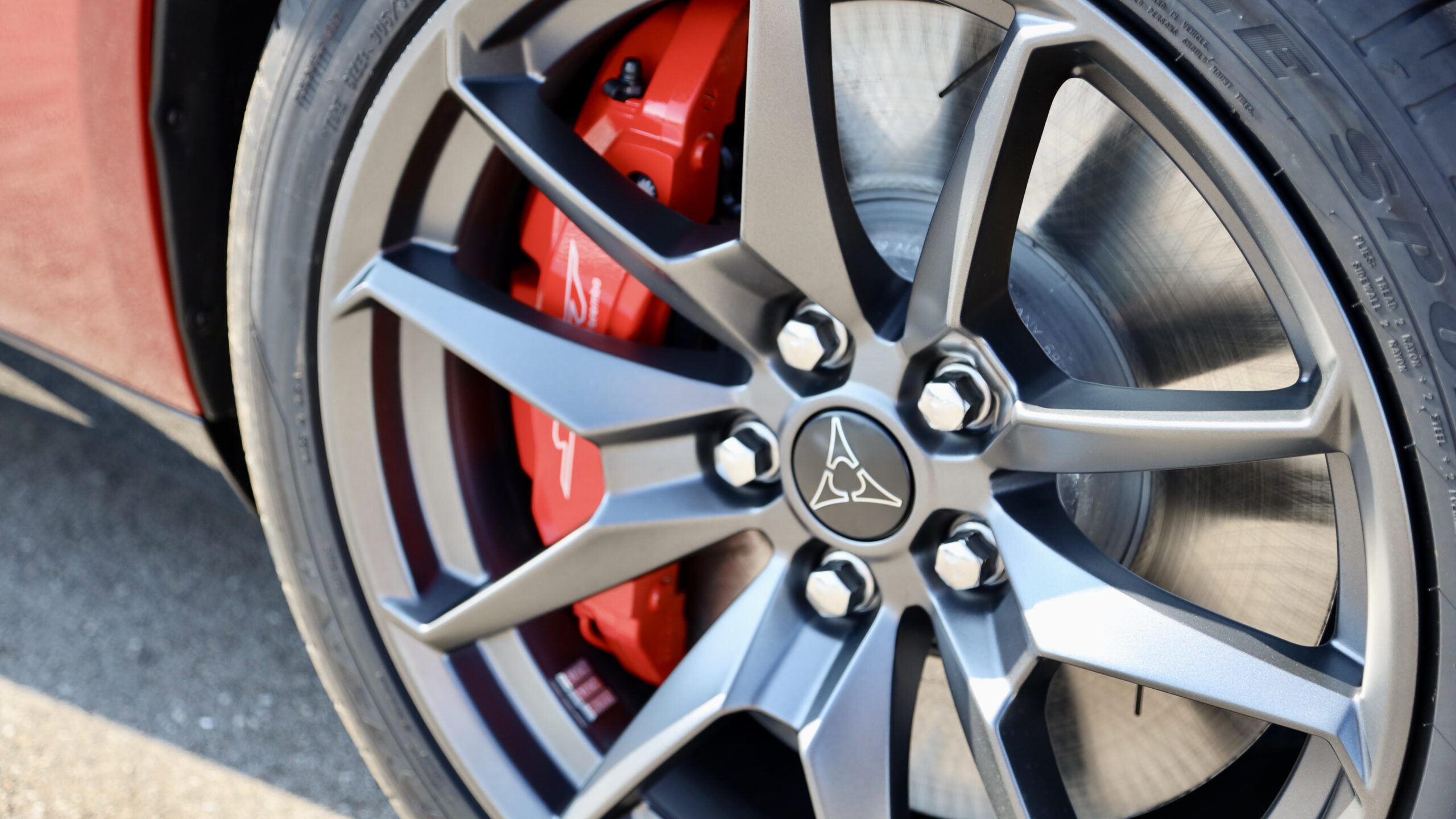
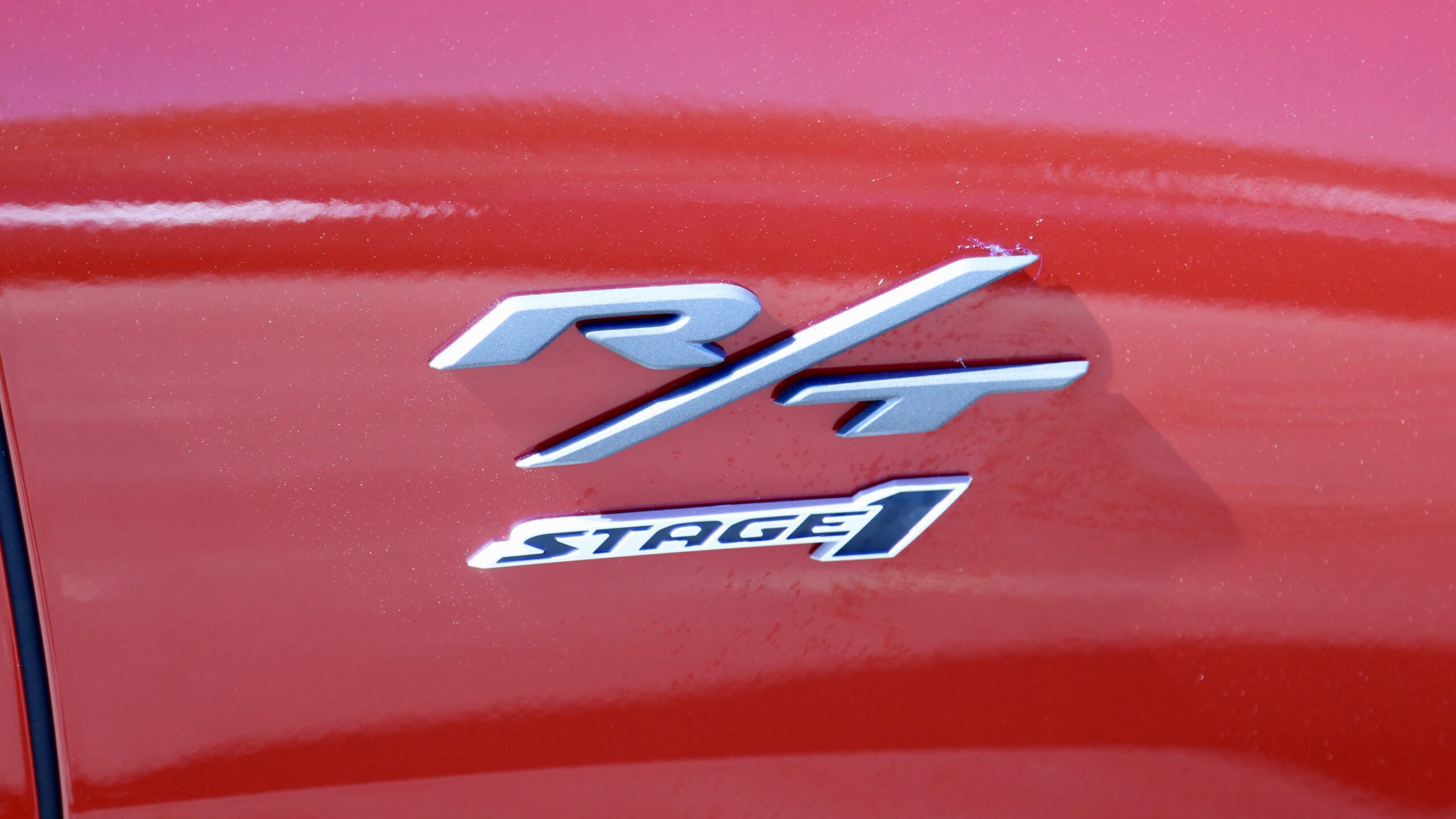
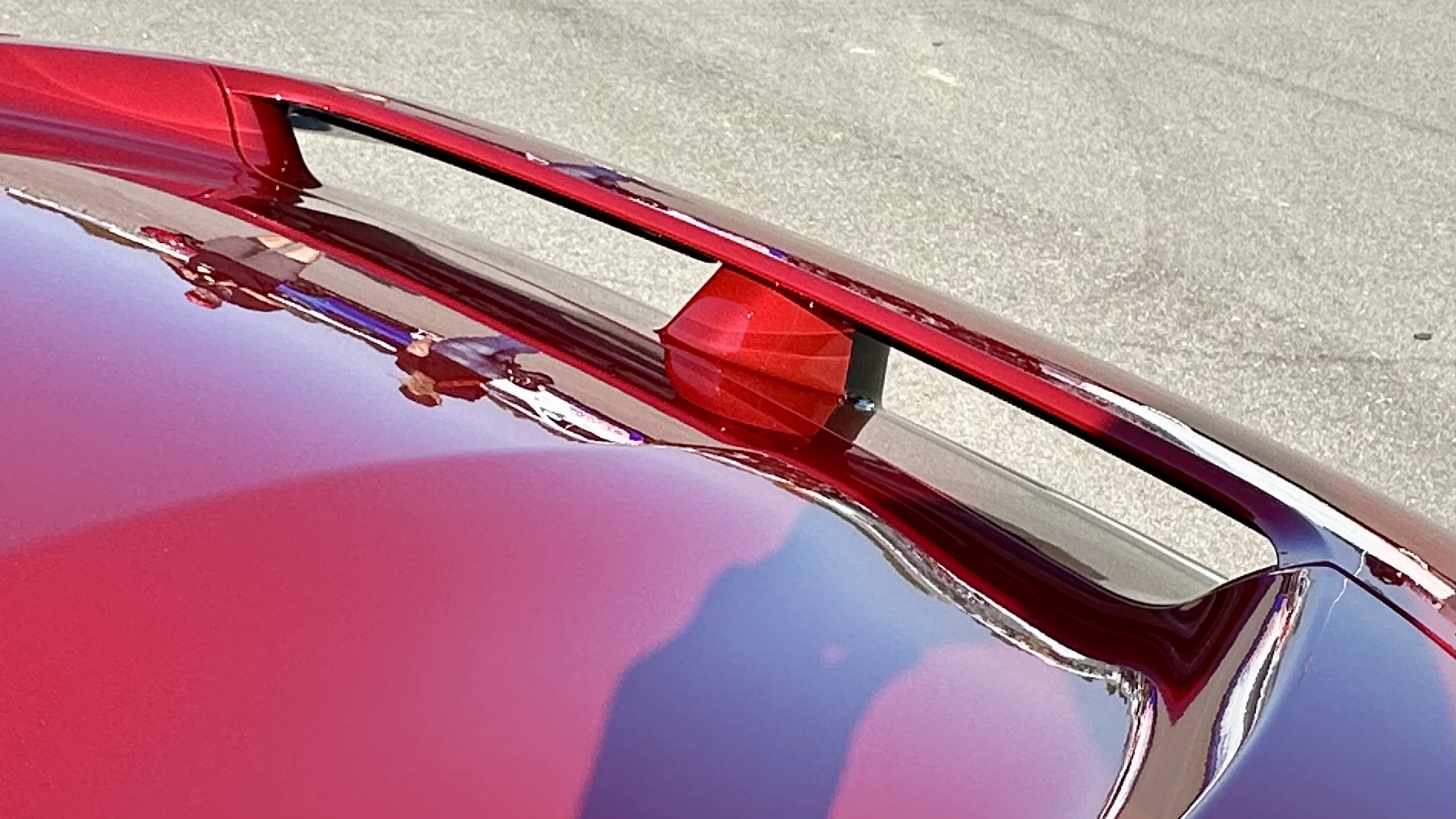
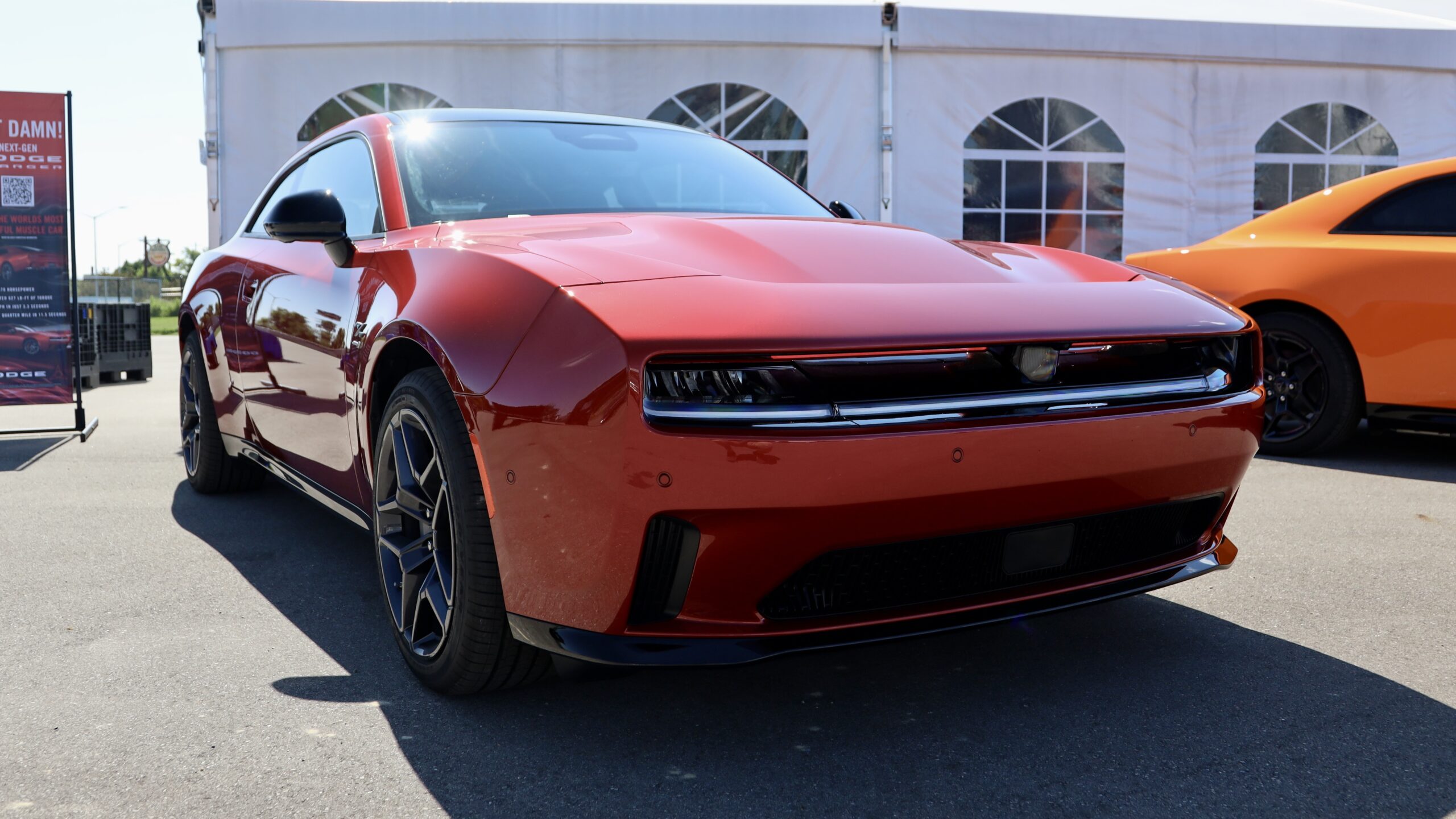

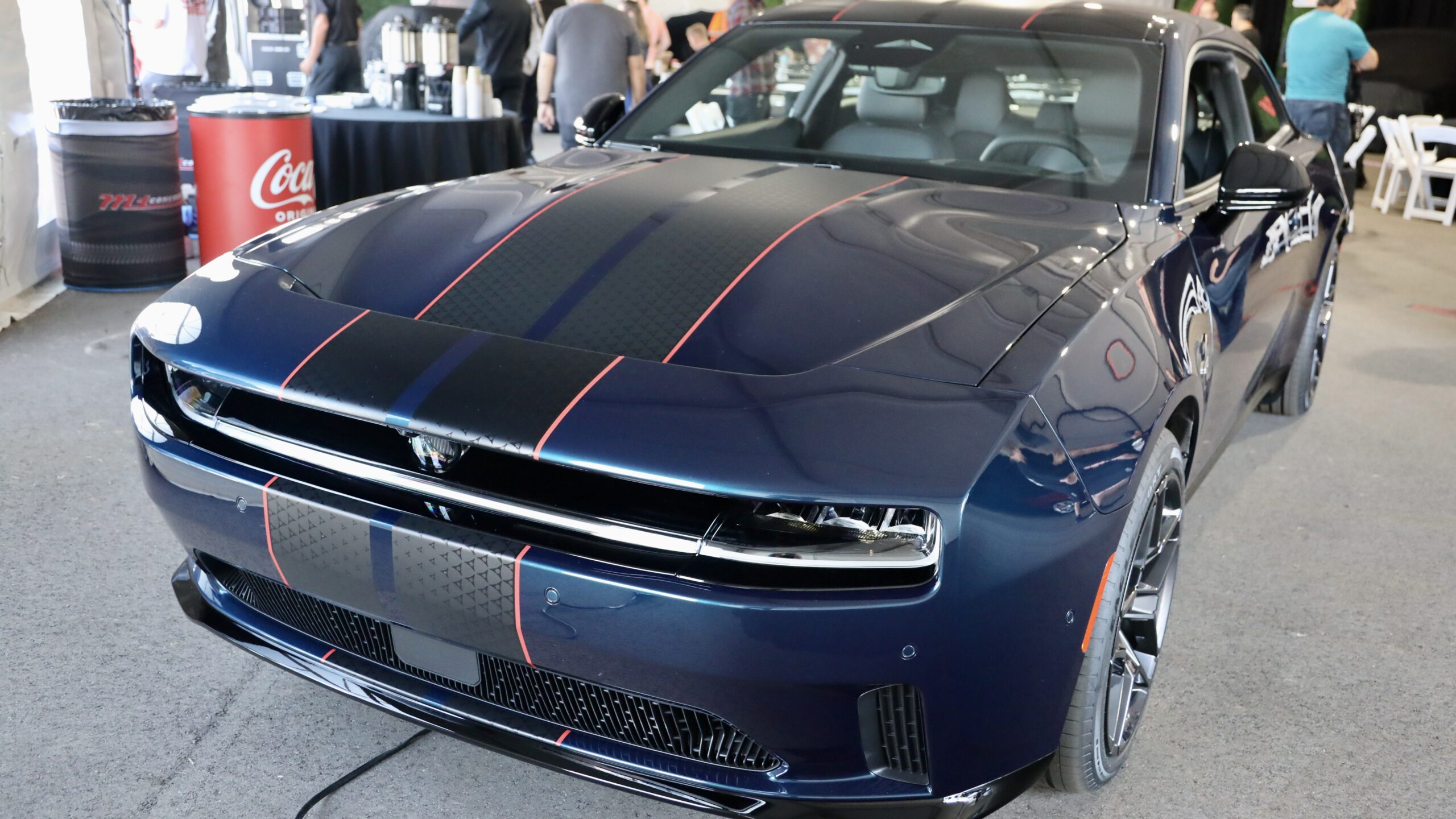
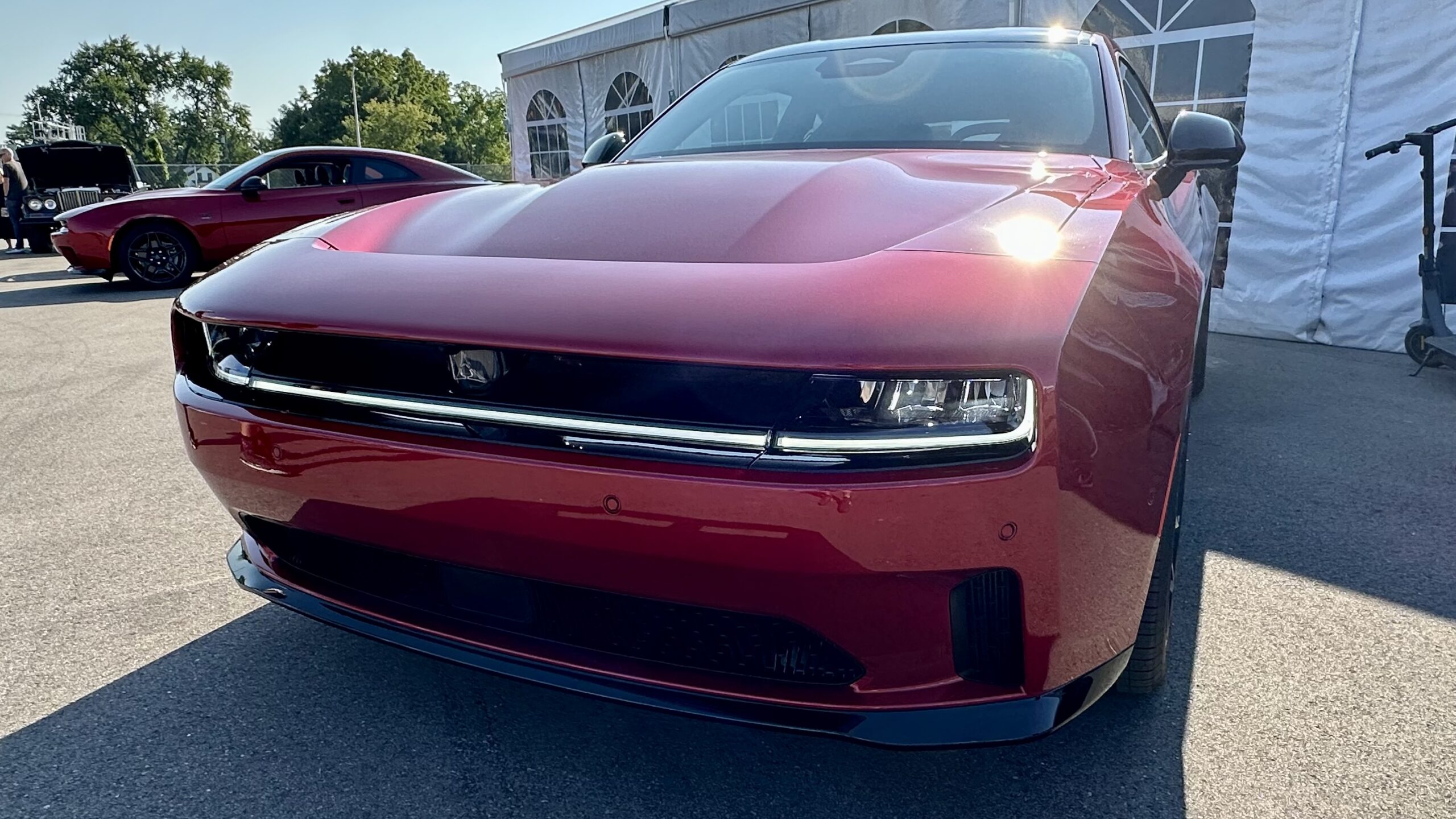
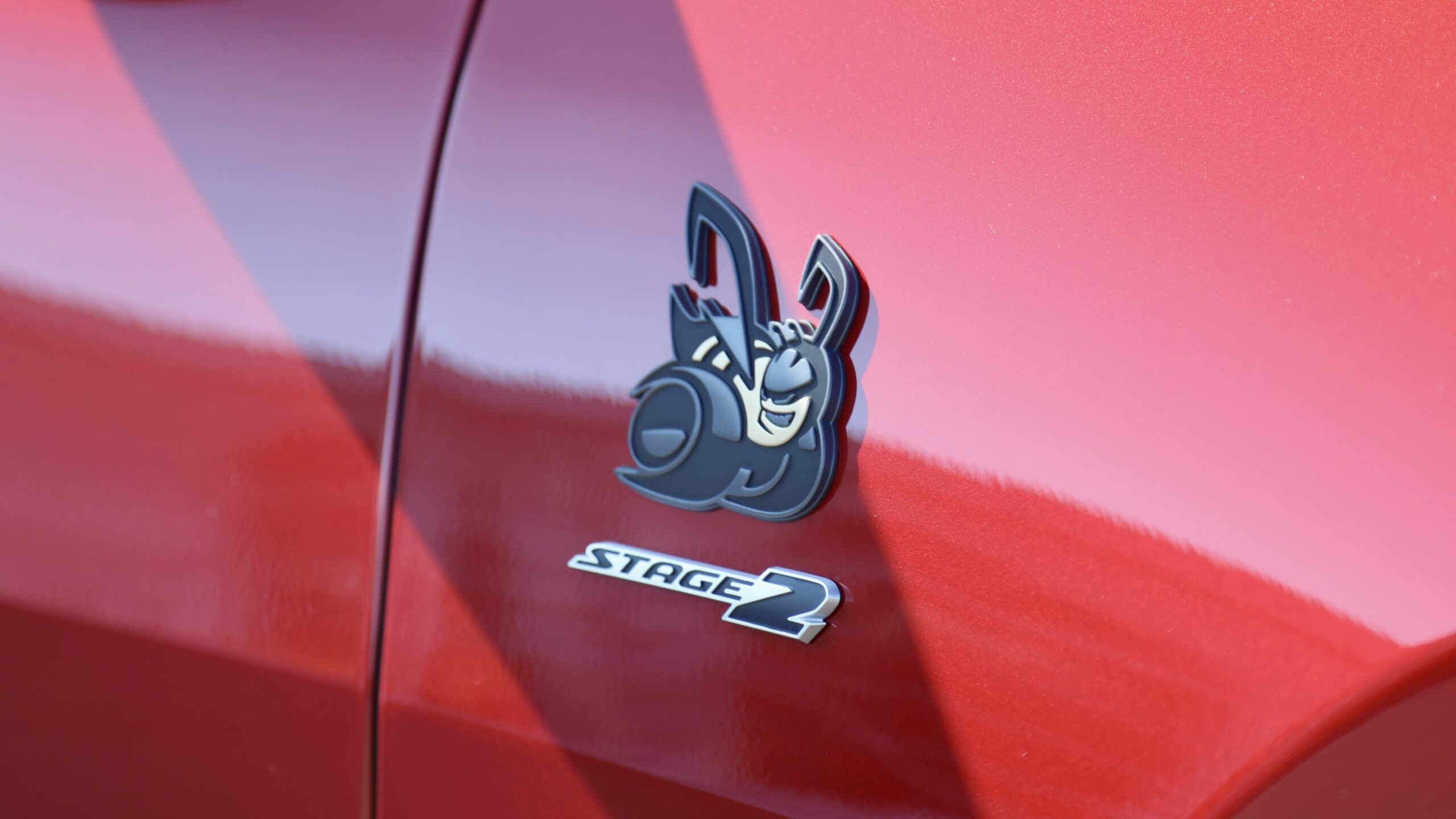
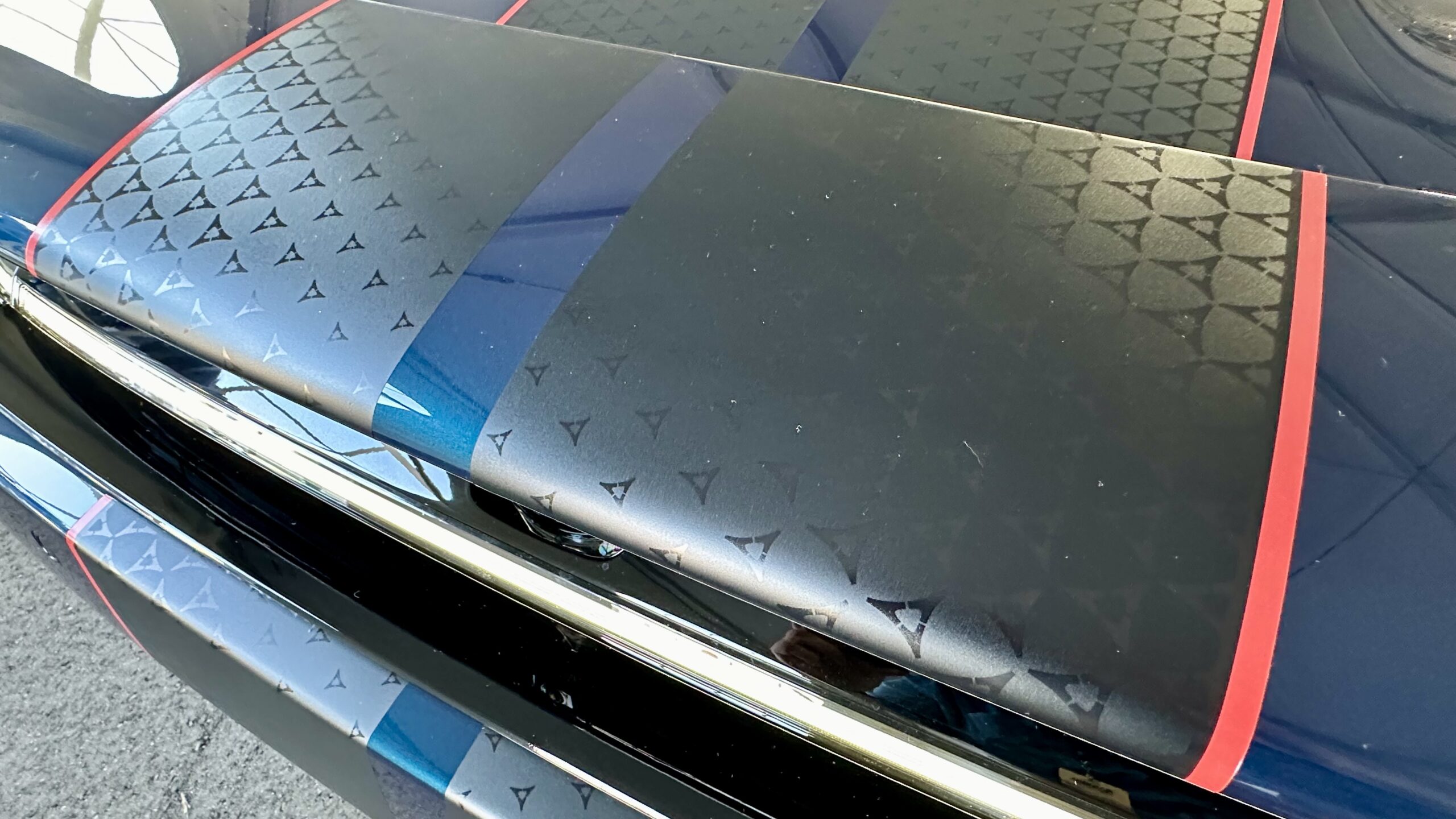
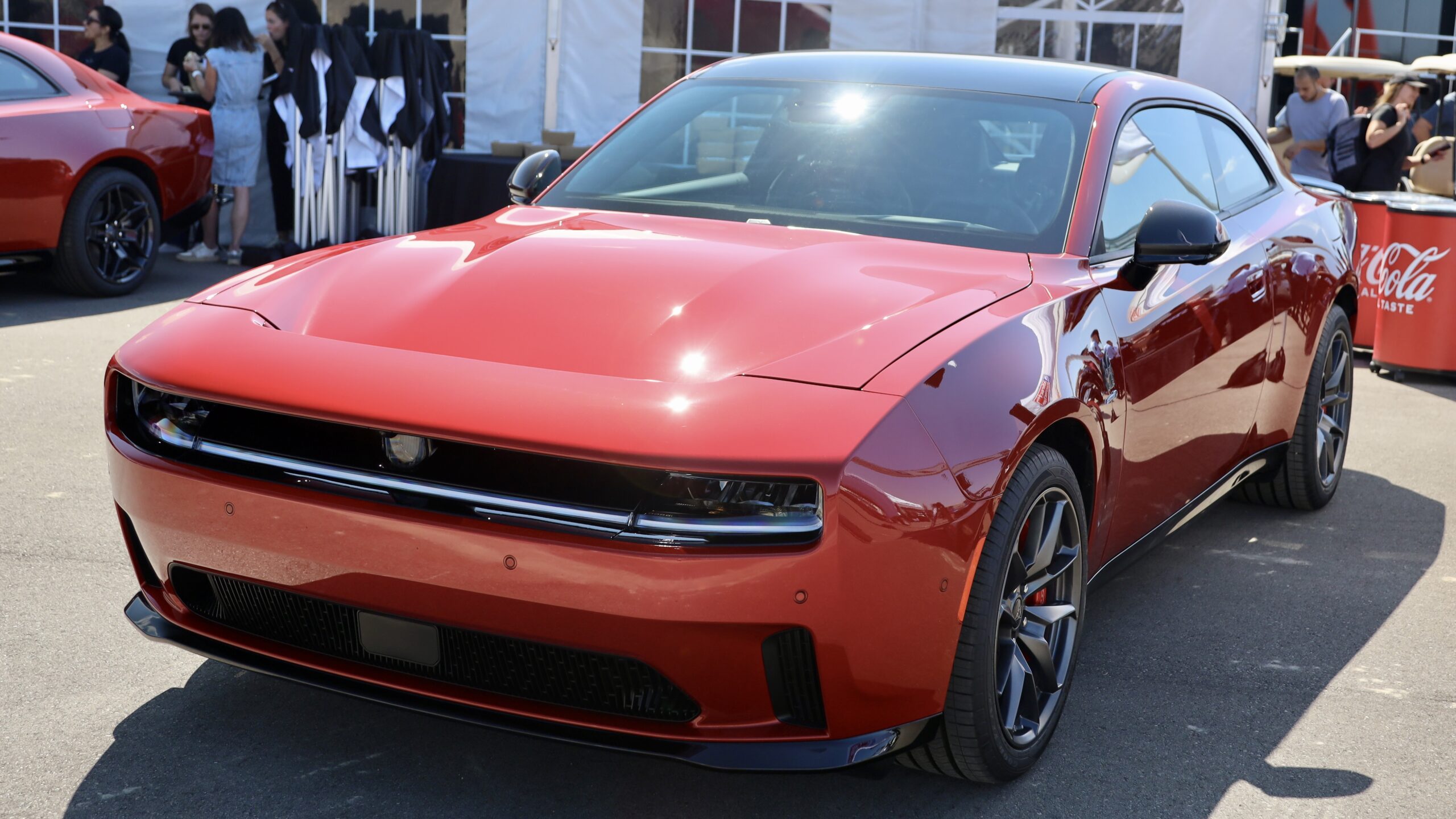

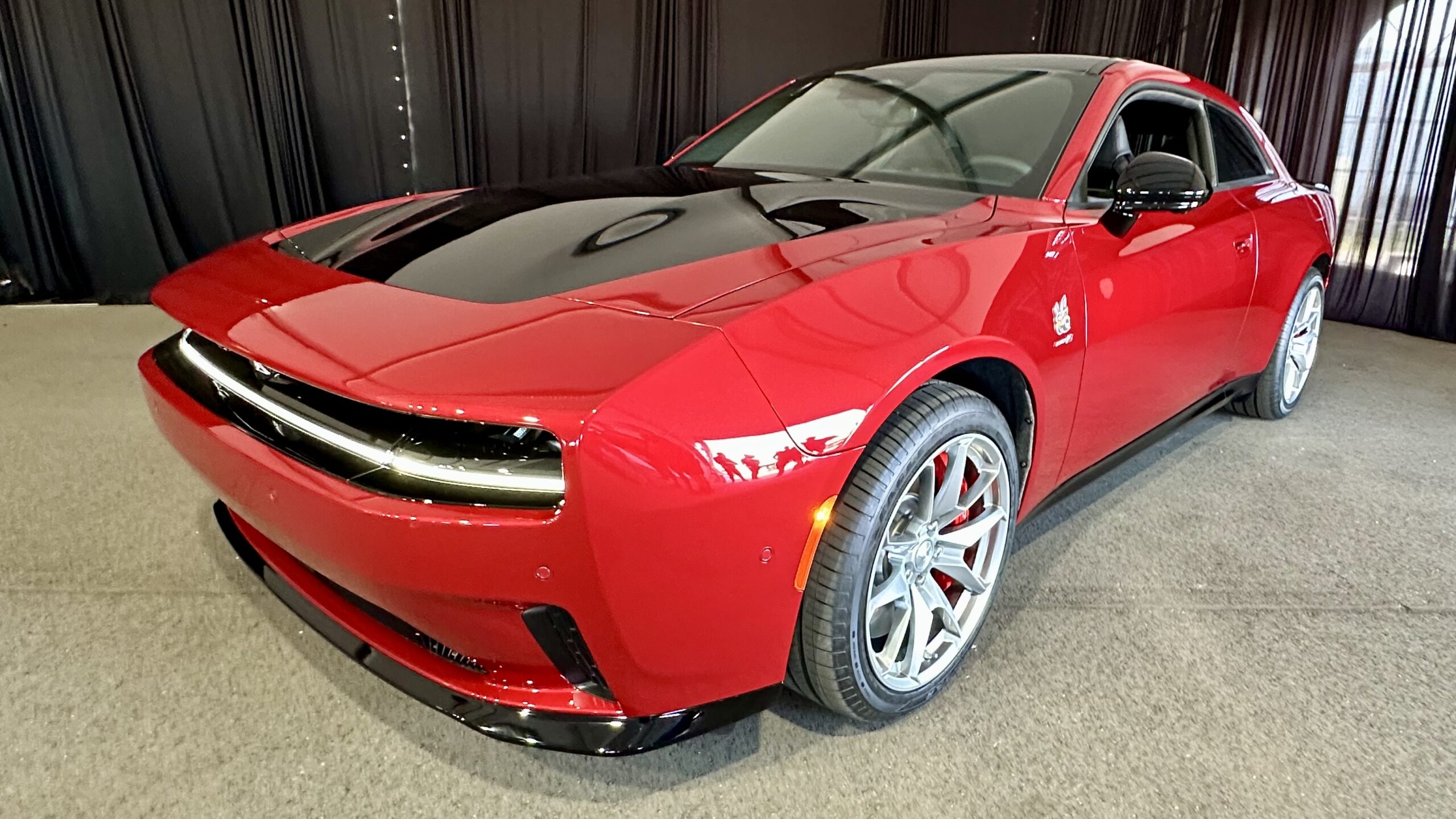
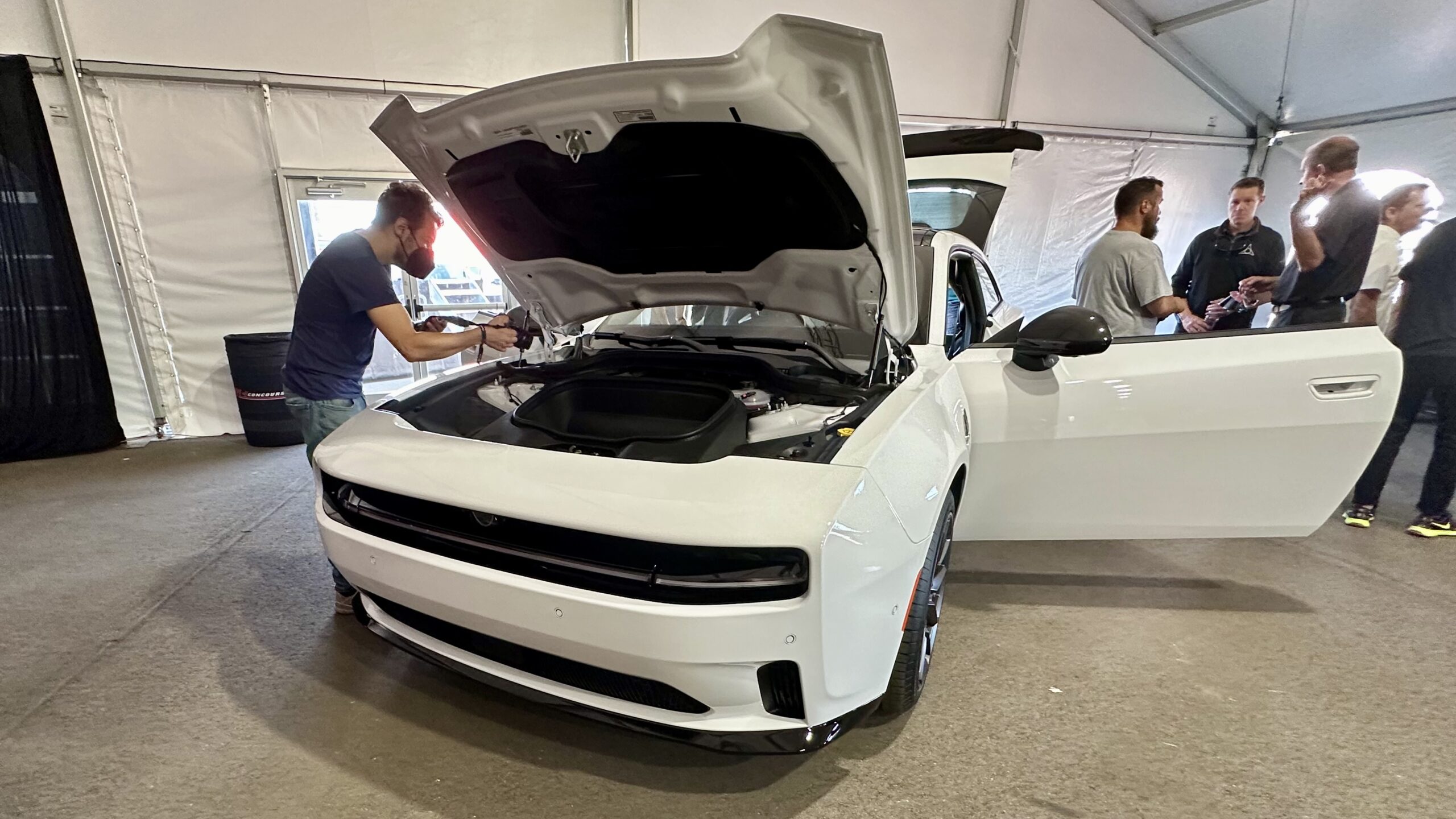
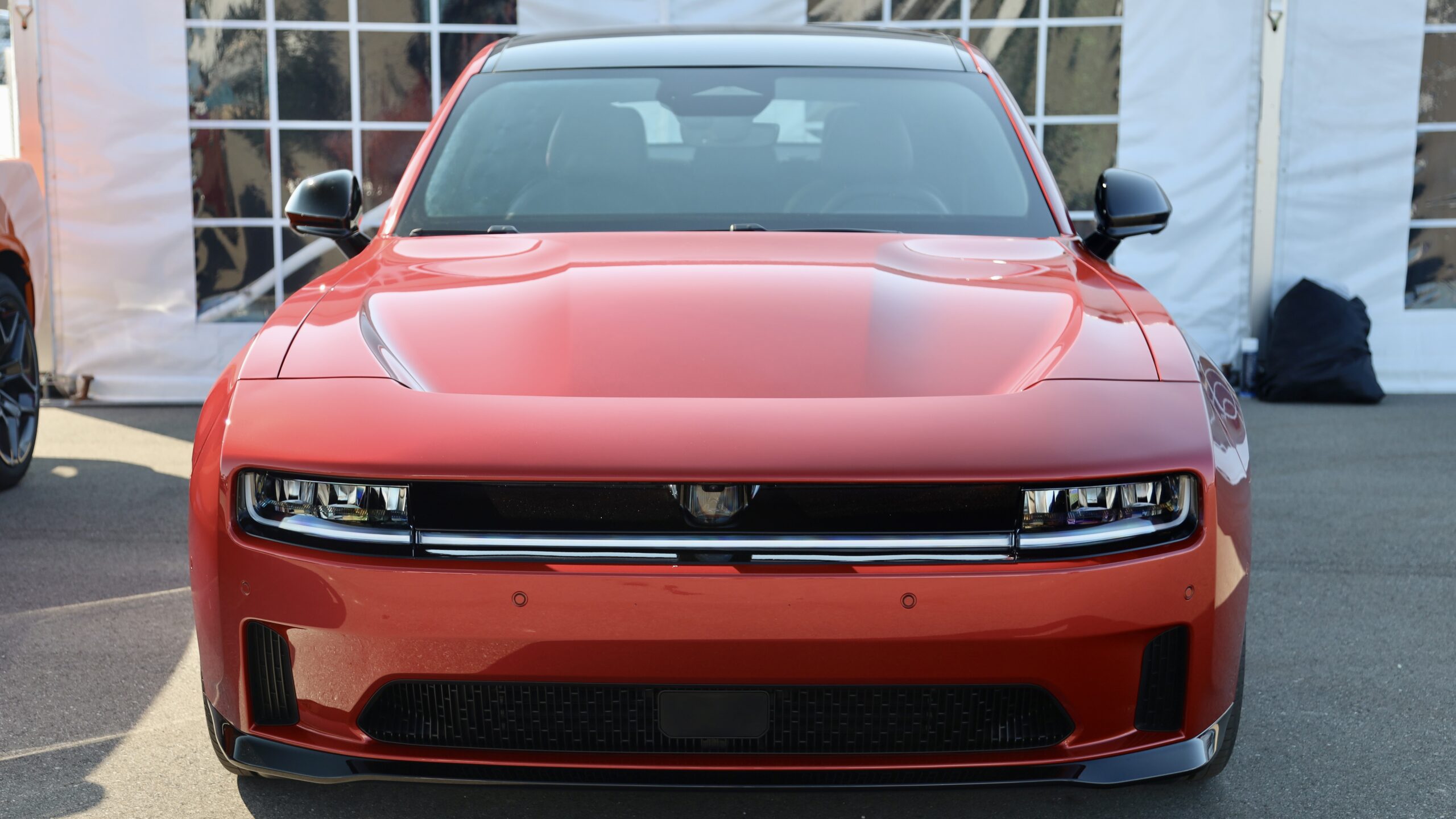
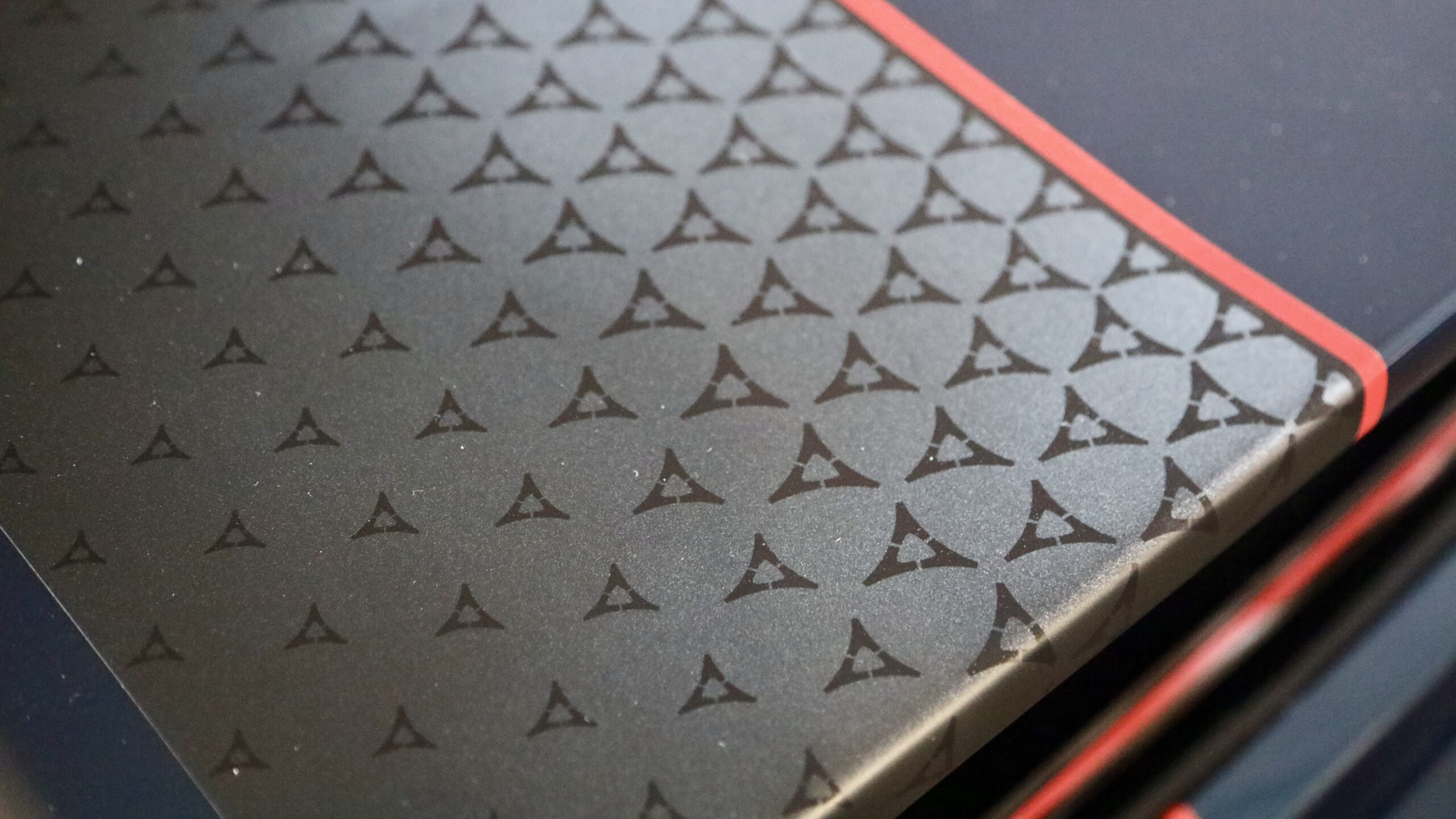
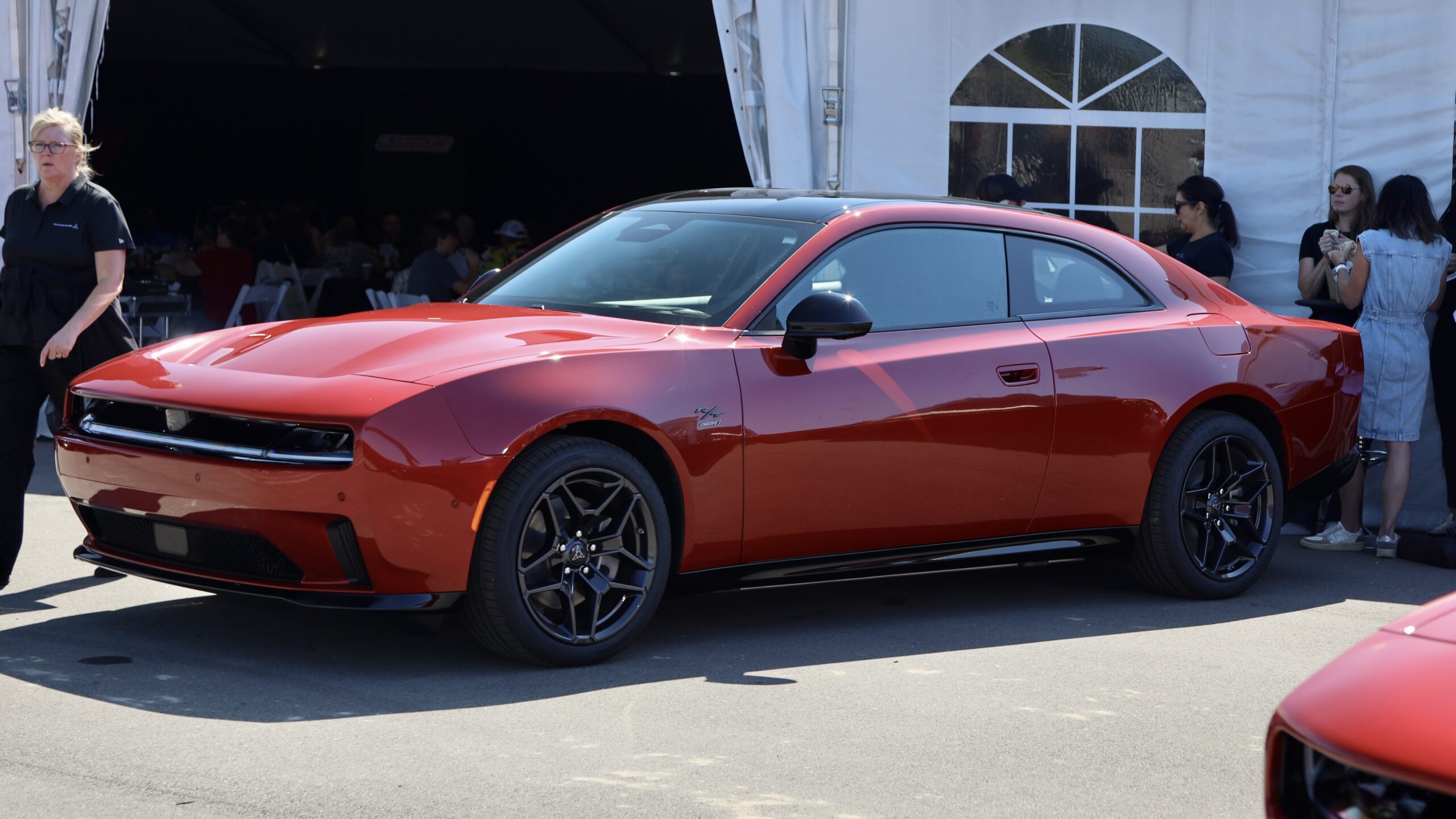
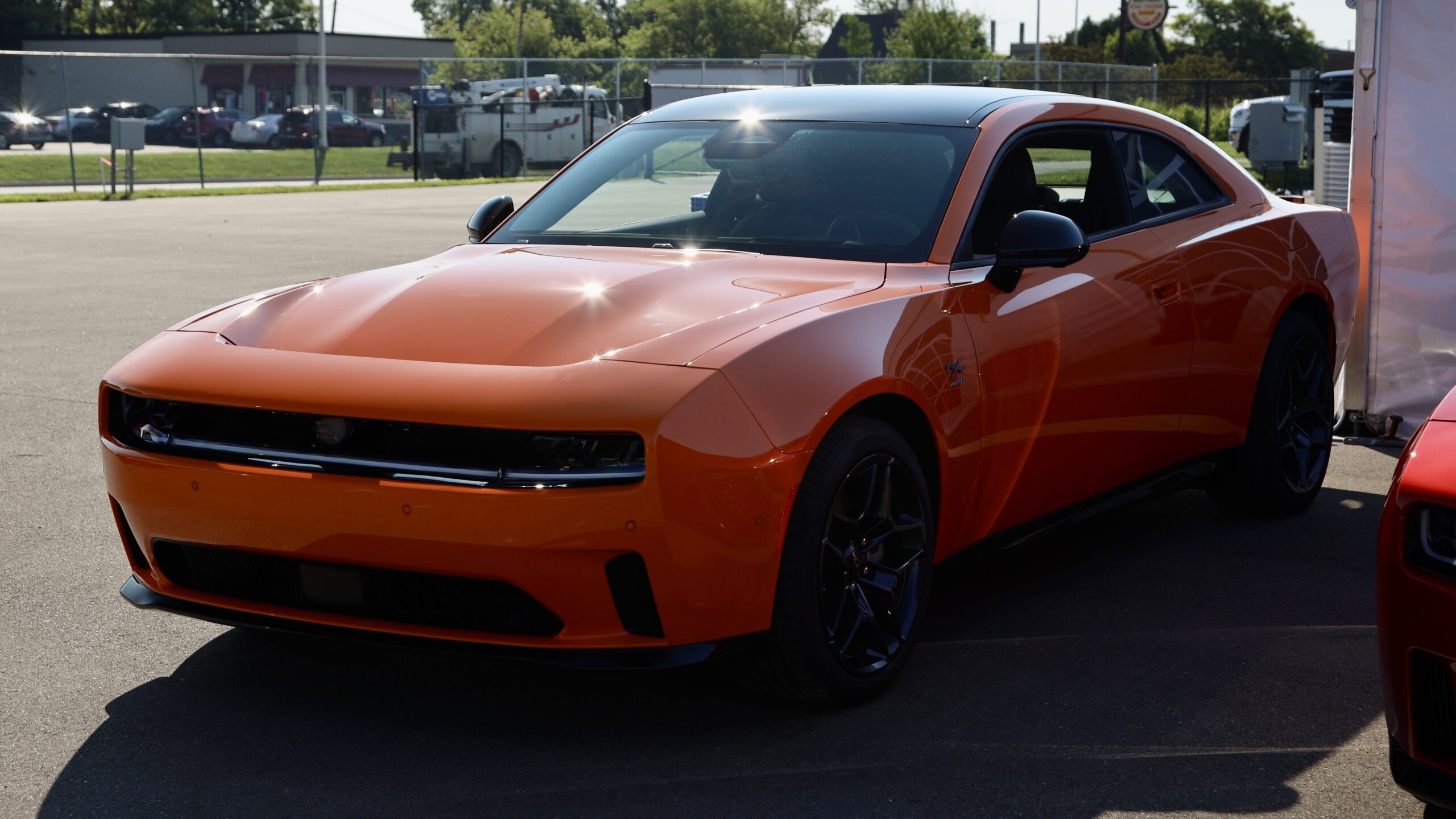
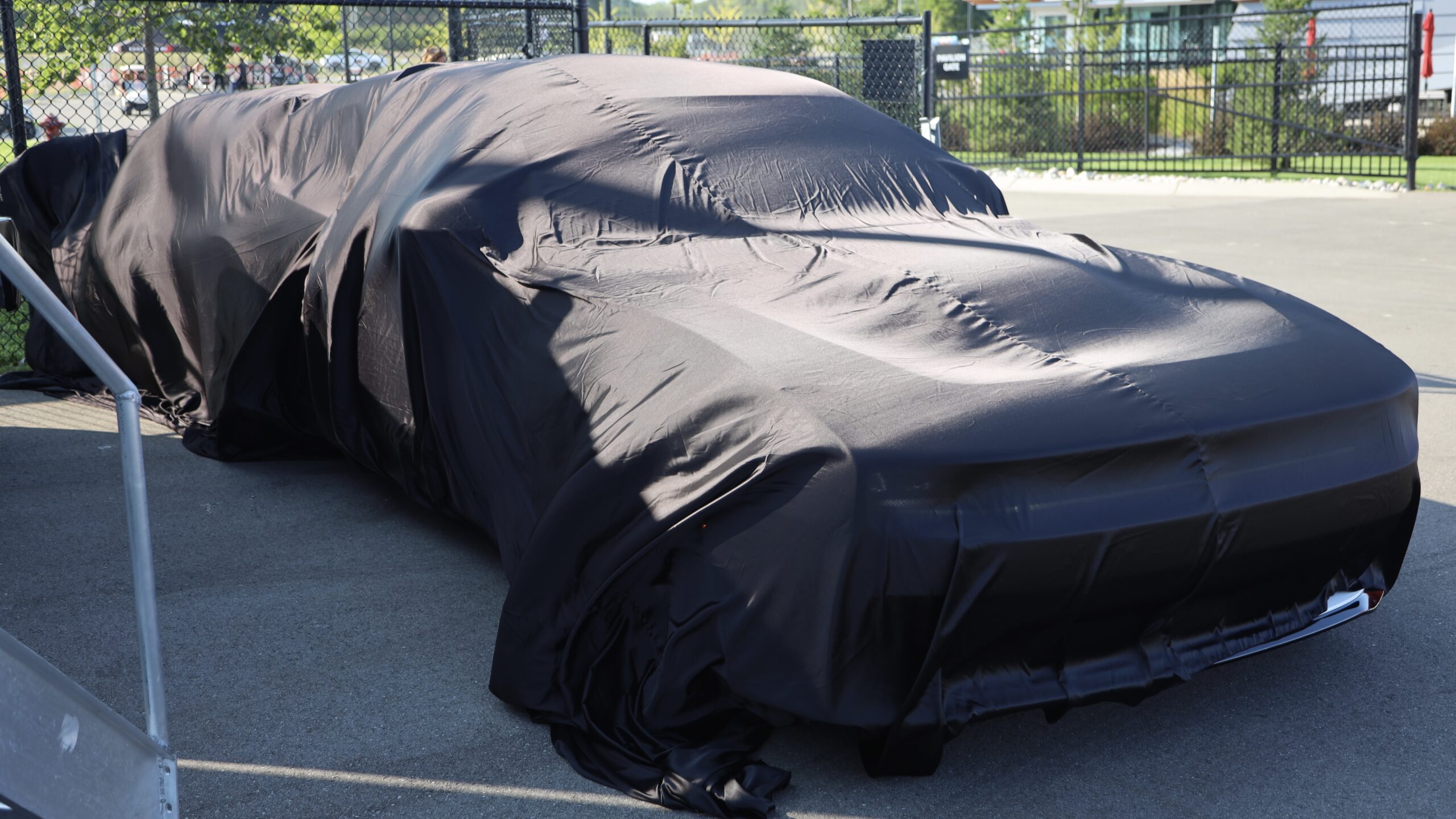
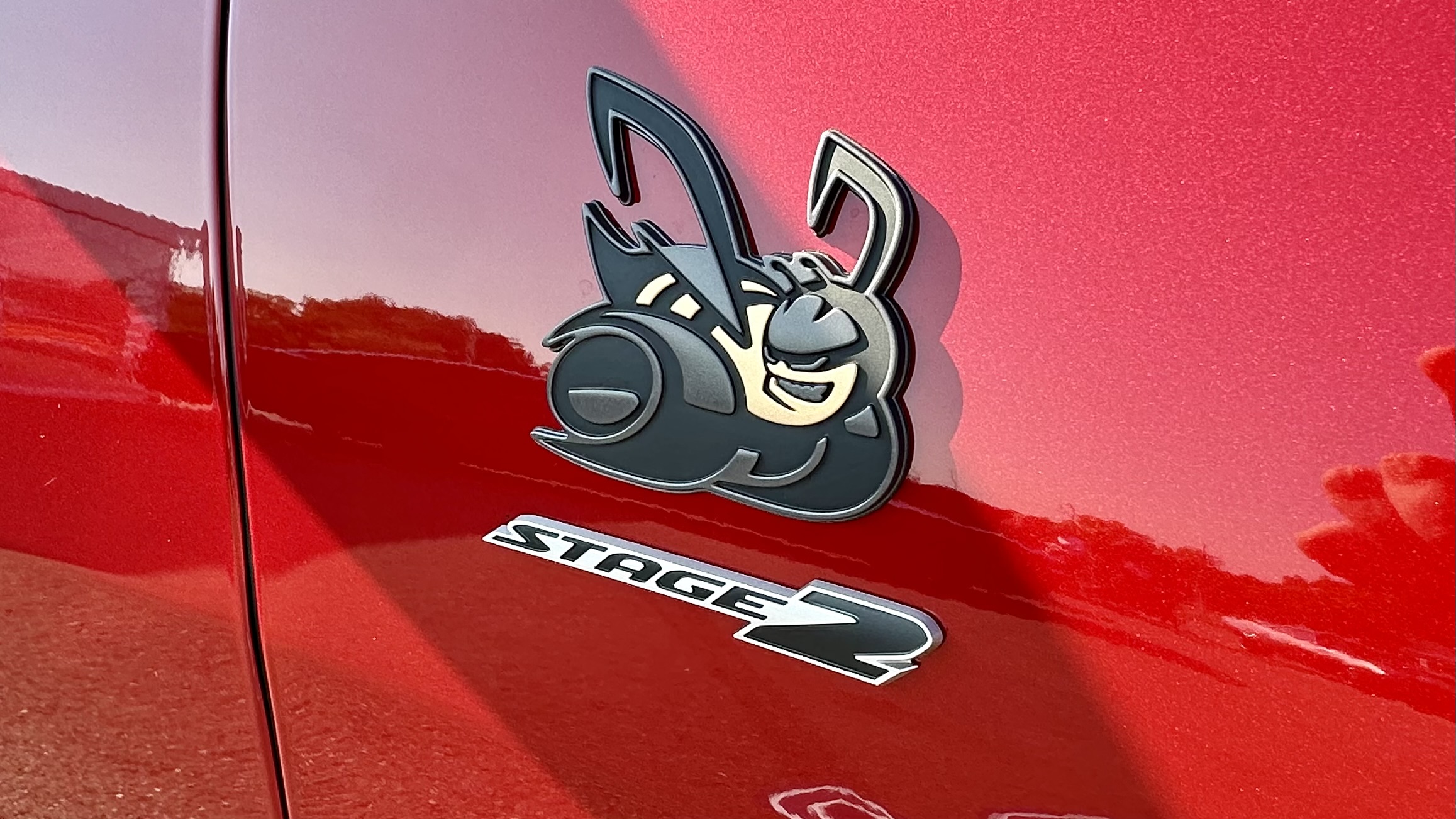
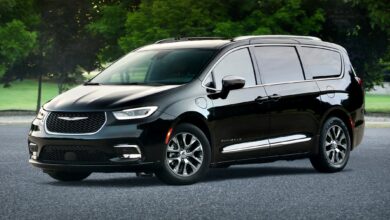
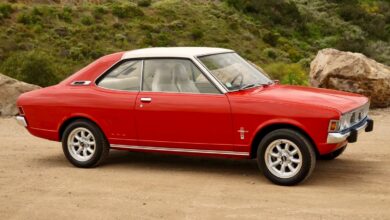
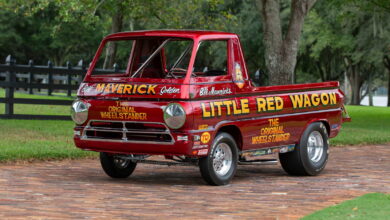
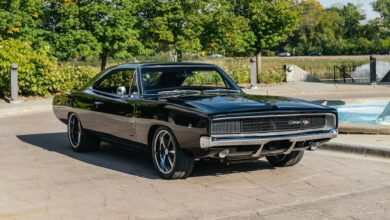

35 replies
Loading new replies...
Join the full discussion at the Mopar Insiders Forum →